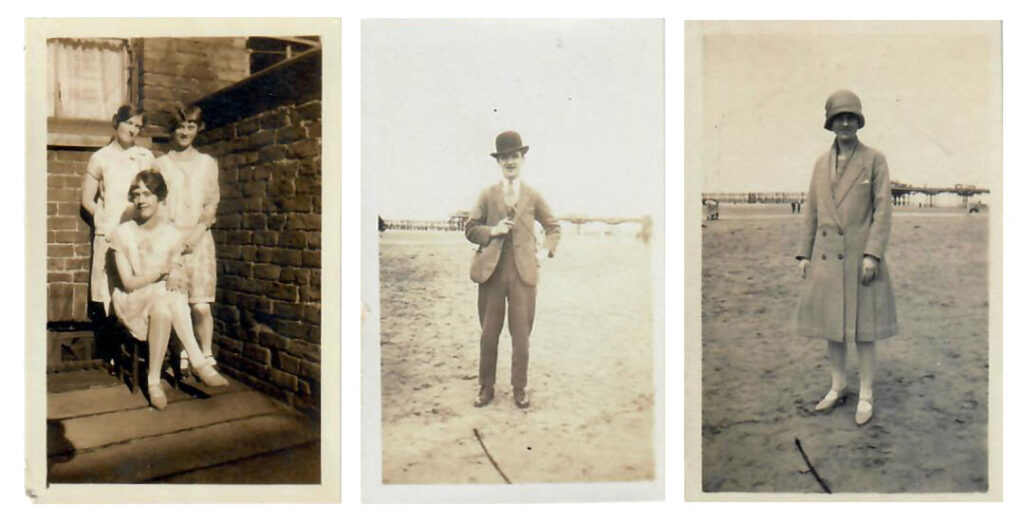Lino prints
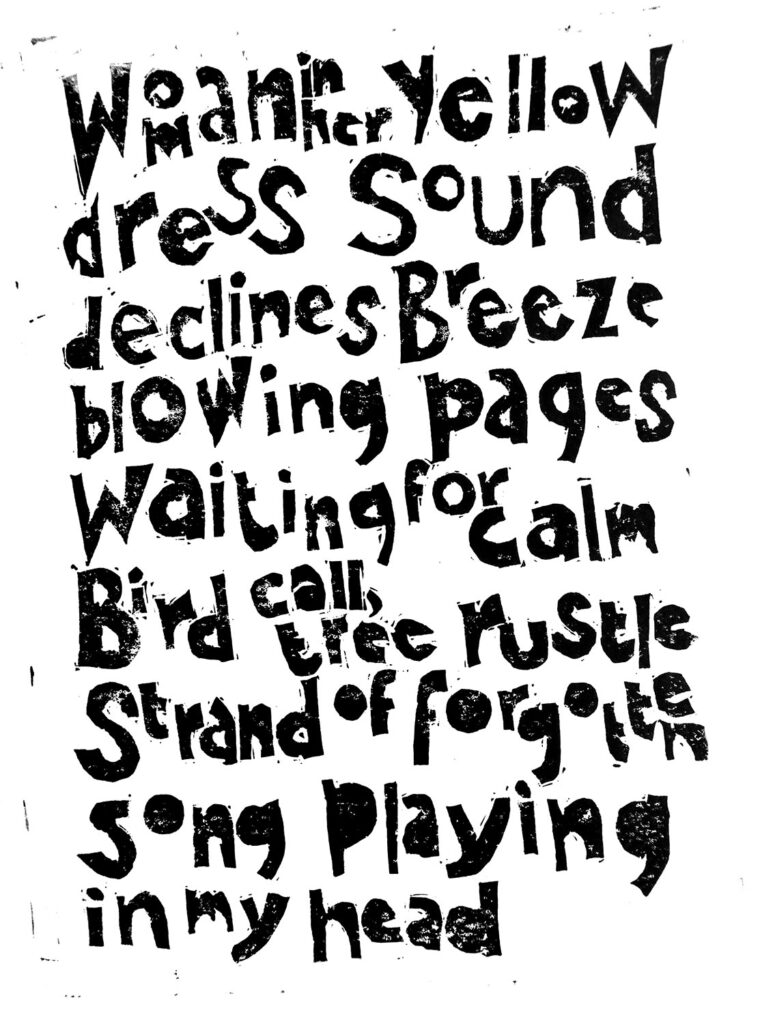
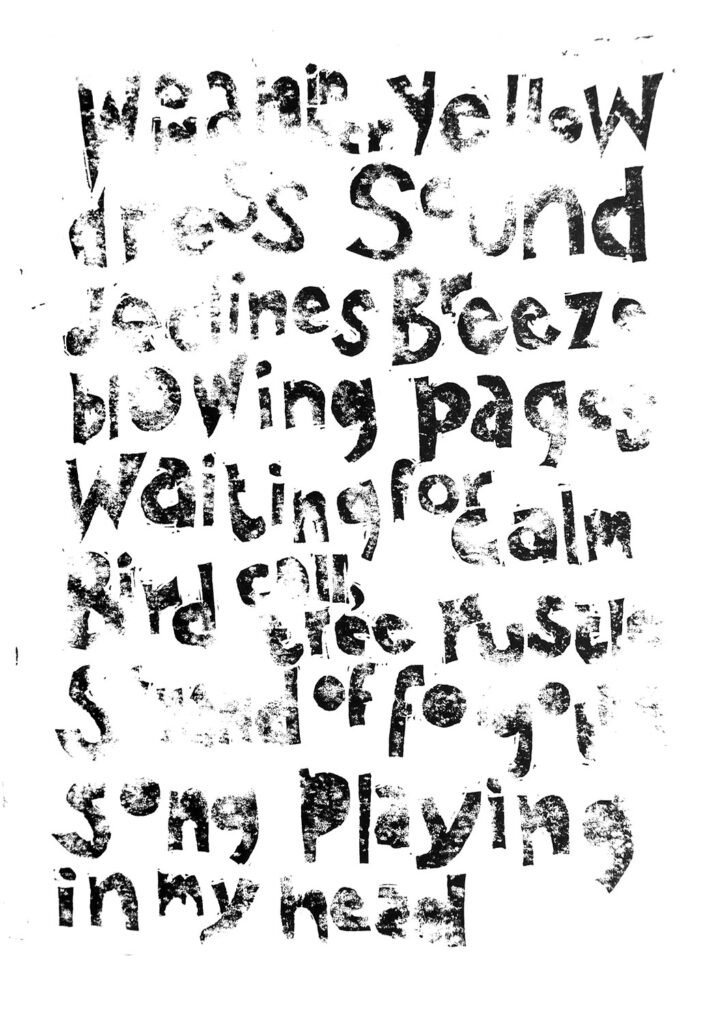
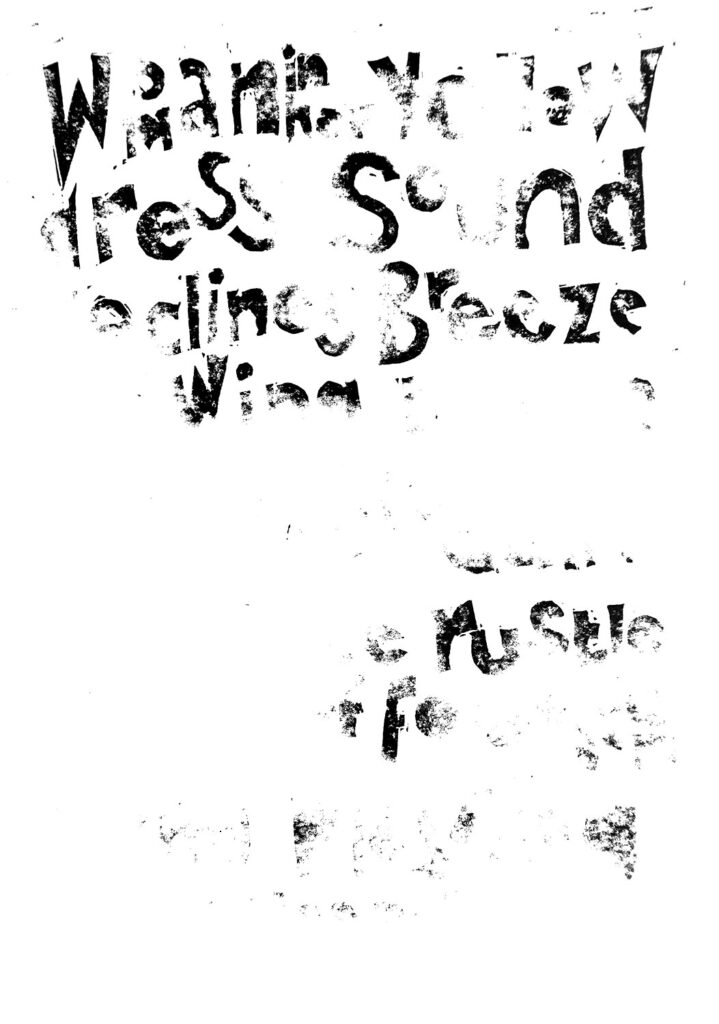
Lino prints, inspired by sitting and observing in the Horniman museum. Fleeting memory.



Lino prints, inspired by sitting and observing in the Horniman museum. Fleeting memory.
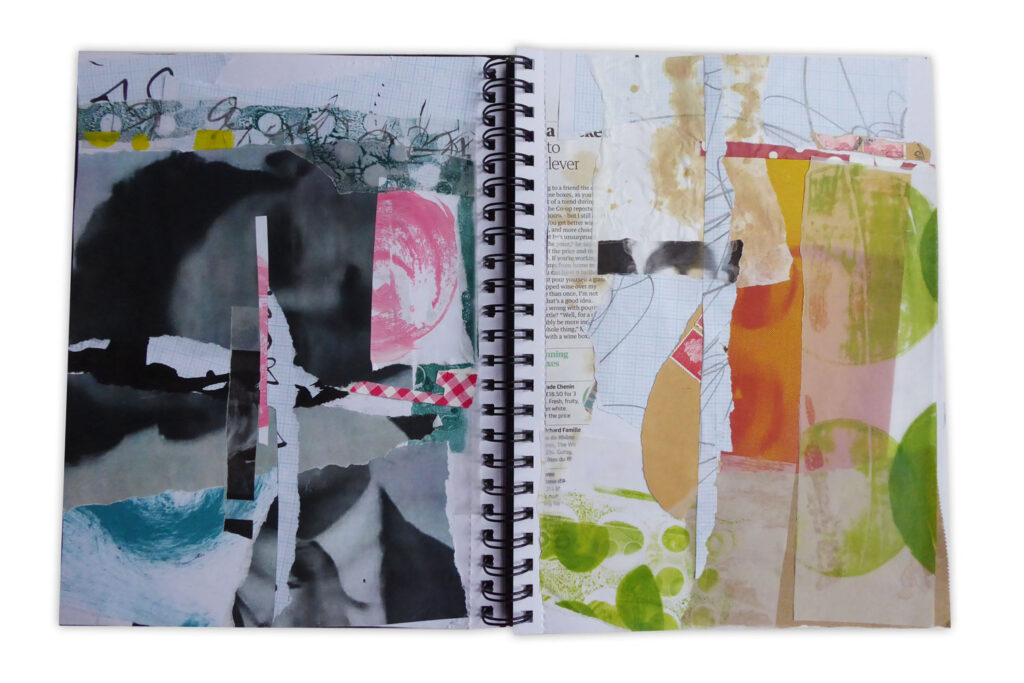
To think or not to think. The collage above, was thought out placing items carefully and then glueing into place. The collage below was spontaneous, placing items intuitively, adding thick black posca pen, only making decisions about where to add pink spots at the end.
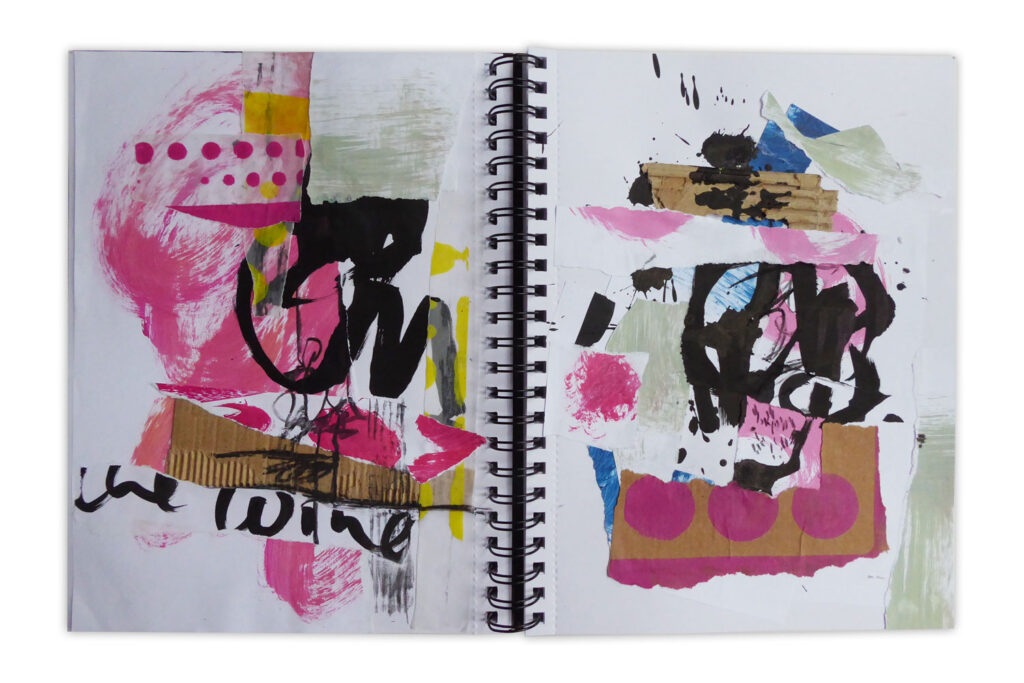
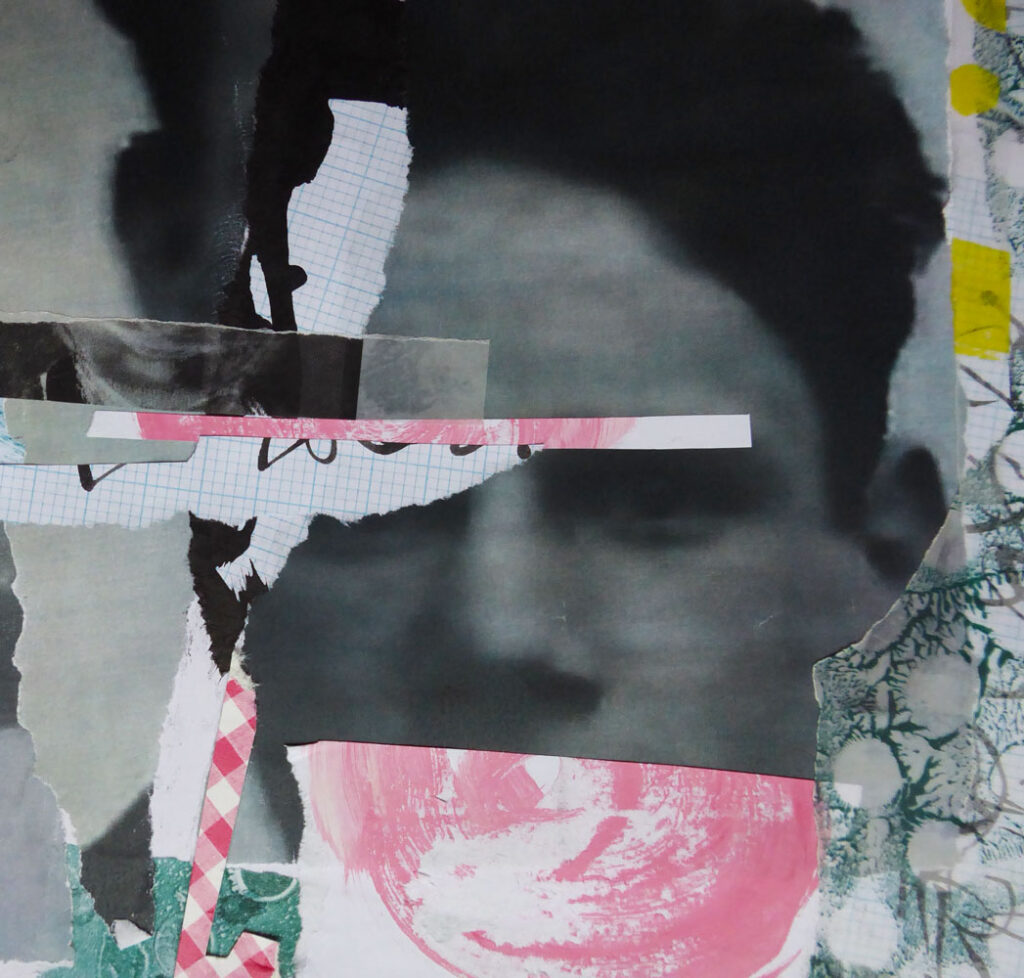
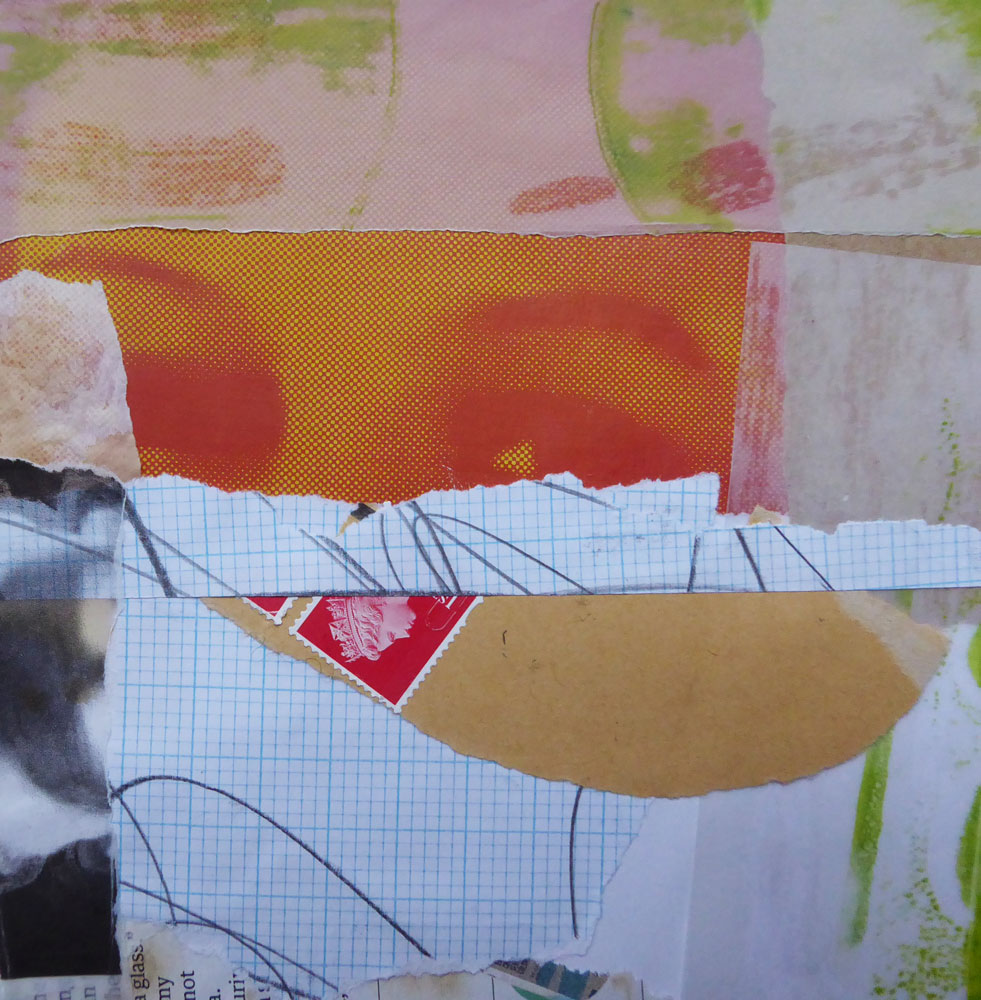
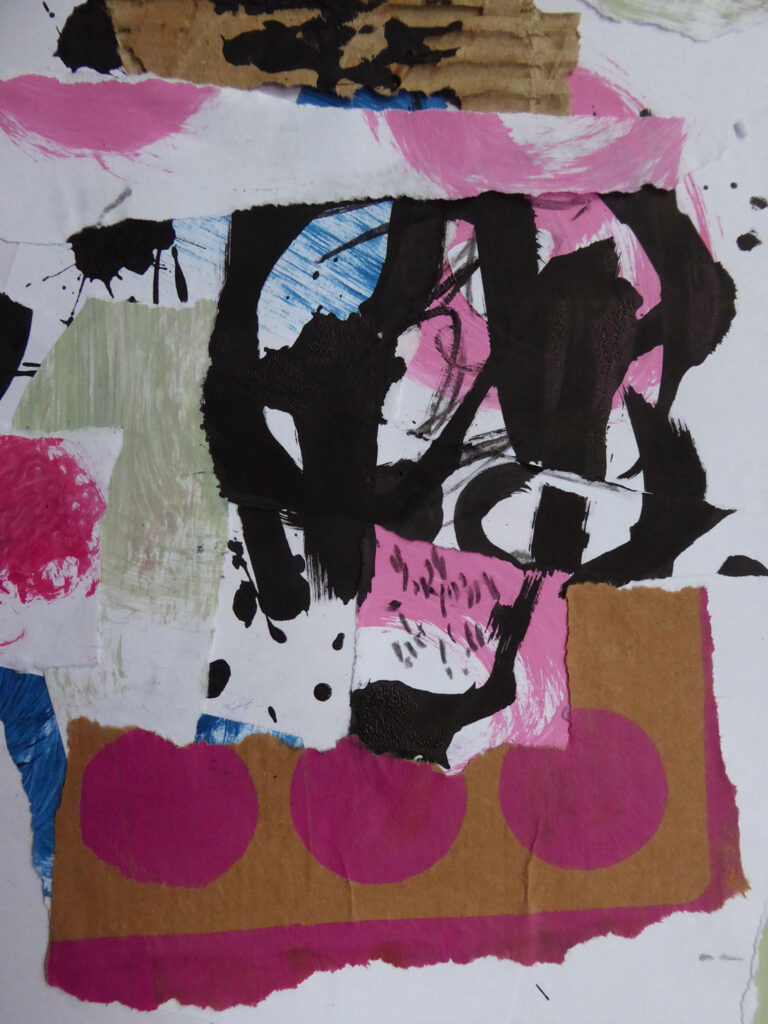
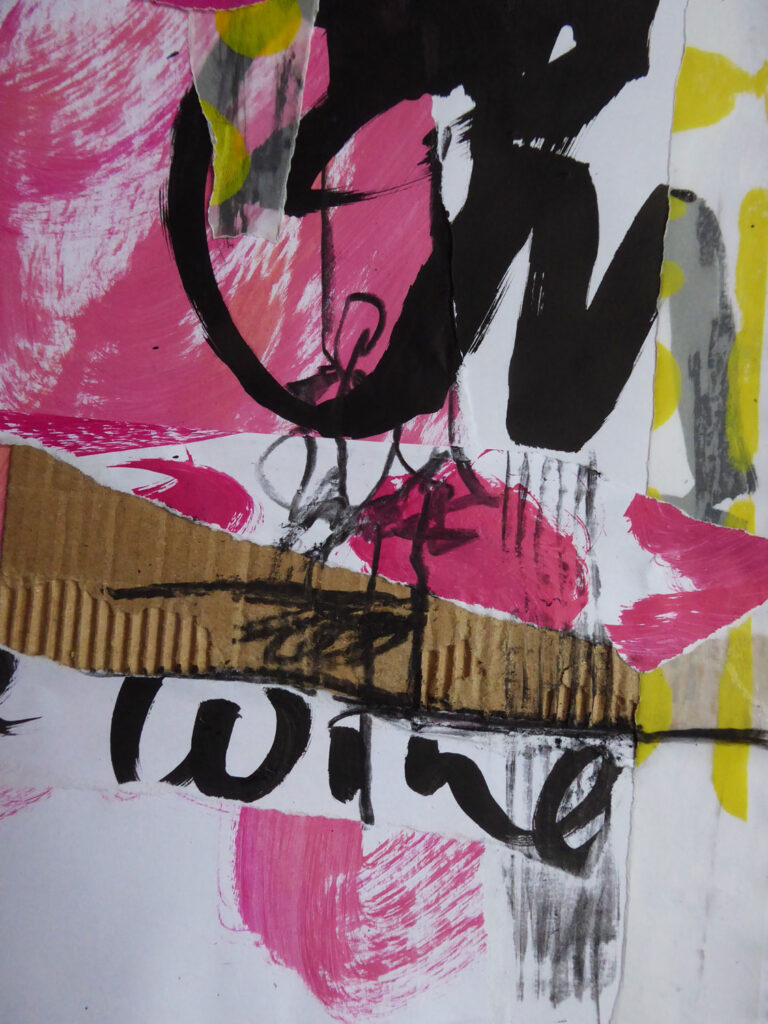
Books
A Dog so Small by Phillipa Pearce
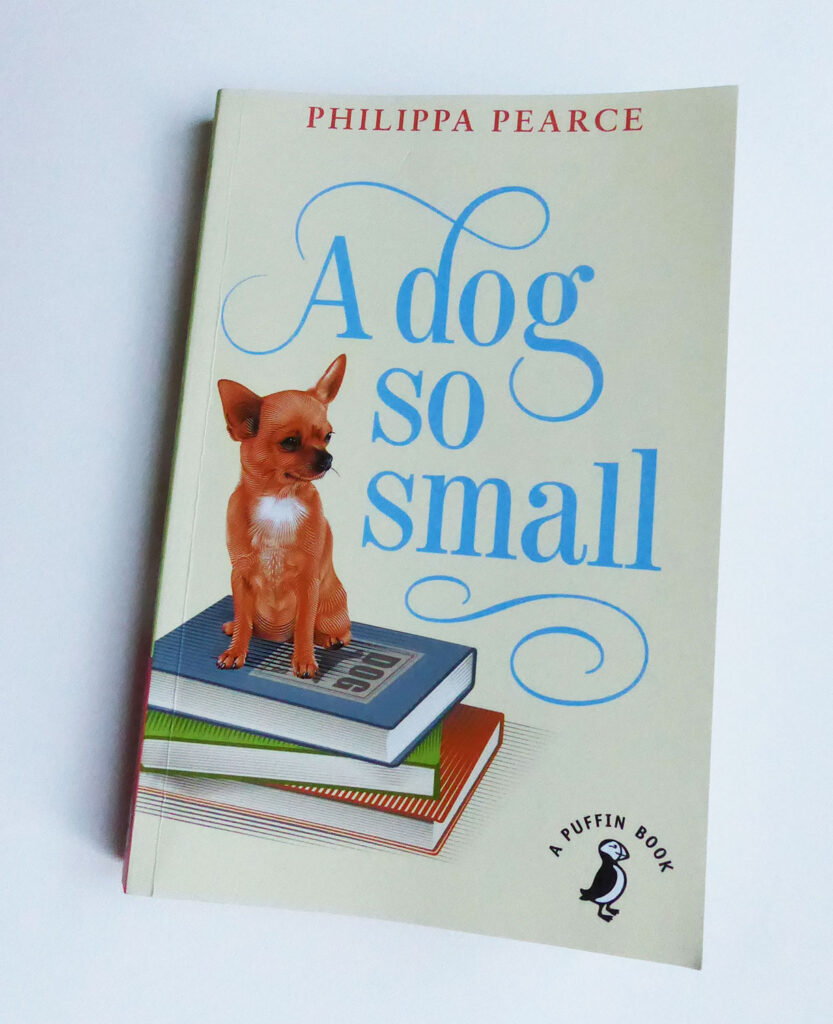
“Then, suddenly, when Ben could hardly see, he saw clearly. He saw clearly that you couldn’t have impossible things, however much you wanted them. He saw that if you didn’t have the possible things, then you had nothing.”
I read a lot of books, I always have done. When thinking about a book from my childhood, this one immediately sprang to mind.
Themes of loneliness, desire, longing, fantasy, imagination, dreaming and introspection. Ben lives in central London and longs for a dog. His parents say that he can’t have one, it’s not practical in their small flat.
His grandfather promises him a dog for his birthday but instead Ben is given a picture of a chihuahua. The chihuahua becomes his fantasy dog which Ben can see when his eyes are closed. The book is about the boy’s inner life, he’s so lonely he needs an imaginary dog to keep him company. When his parents move closer to a greener space he is given a puppy by his grandfather but the dog doesn’t meet his fantasy and he initially rejects the puppy.
“People get their heart’s desire, she said, ‘and then they have to begin to learn how to live with it.”
Music
Everything changed when I was seventeen
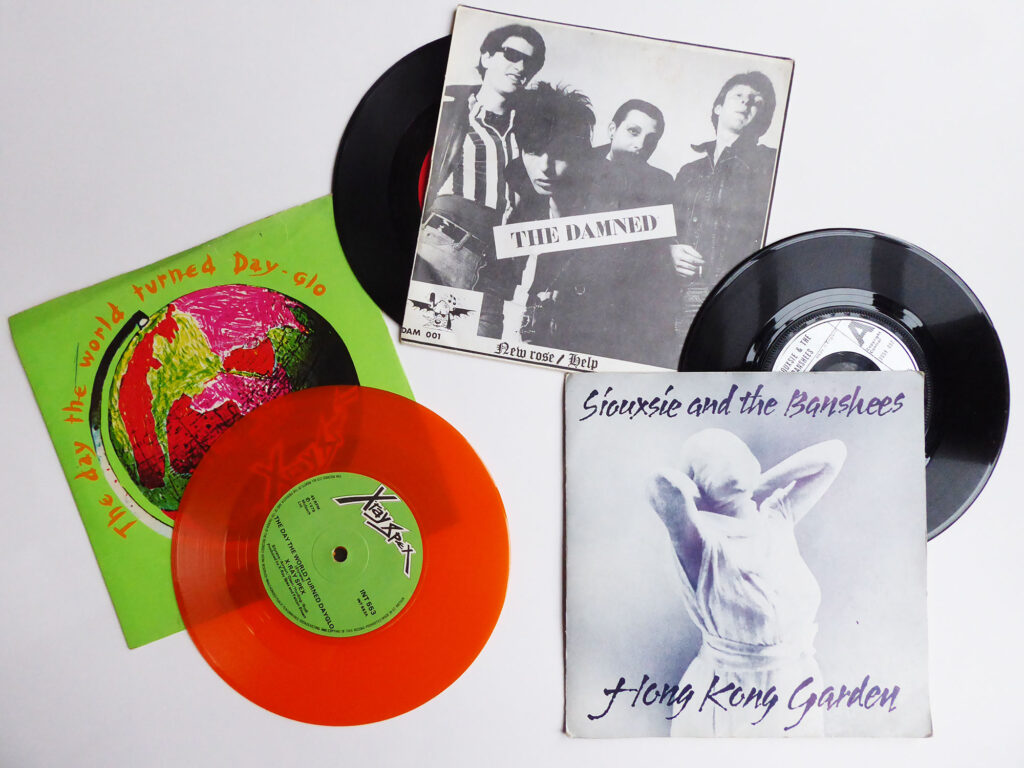
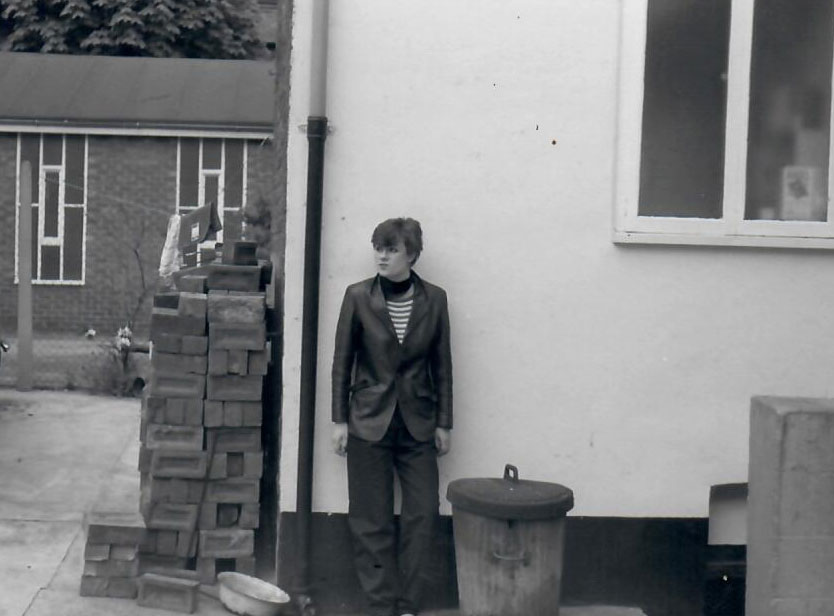
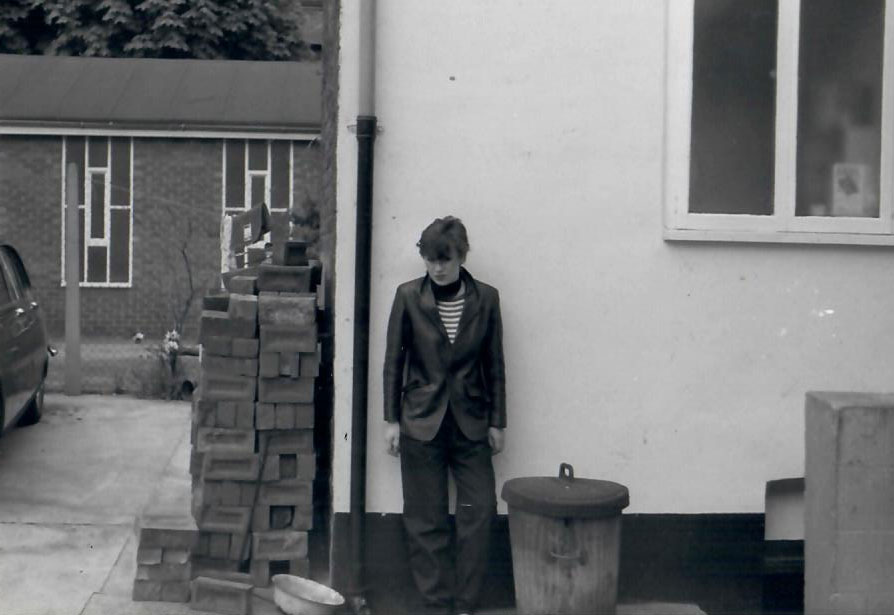
Punk rock was a break from the past. It was a time when bands were teaching themselves to play their own instruments, customising their own clothes, designing and distributing their own fanzines. A time of youthful energy and counter culture.
I heard New Rose by the Damned in 1977 and my world changed. I passed my driving test and drove to Manchester regulary with my best friend Rae to see punk bands at the Factory in Hulme, Manchester. I felt as though I was finding myself, it was a break from my parents and the first time that I felt the music was mine.
Graffiti
Keith Haring
In the 1980’s strange chalk drawings began to appear on the New York subway. Radiating babies, cartoon dogs, people riding dolphins, space ships, hearts, graphic lines drawn onto black unused advertising spaces depicting imaginary beings a bit like cave paintings.
Keith Haring had a joy and energy that he put into his drawings and paintings. He created his art compulsively drawing on cars, vases, walls, furniture and found objects. His art was often produced in public spaces and became political focusing on themes of HIV/Aids and the end of apartheid in South Africa.
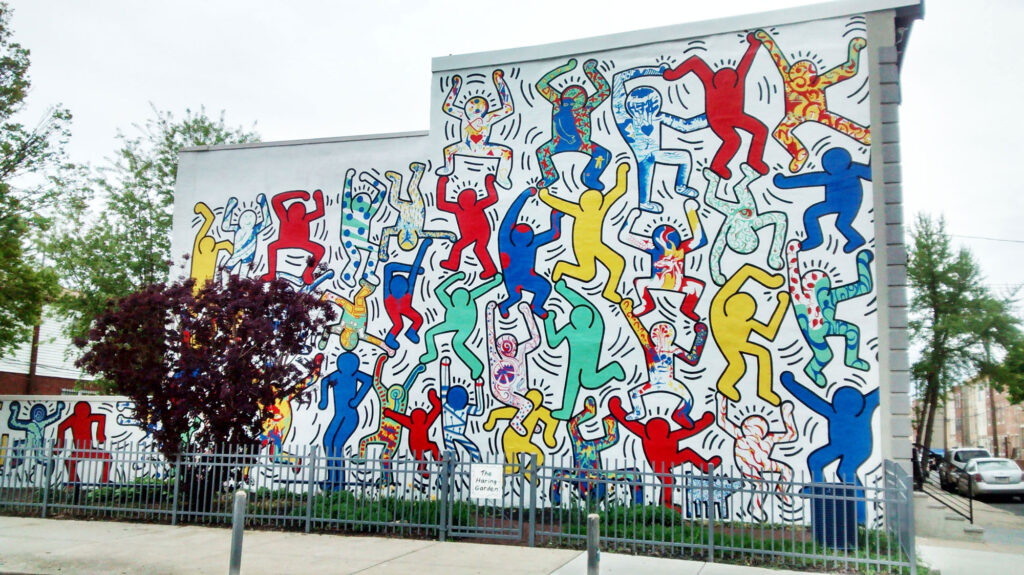
Berlin in the 1980’s

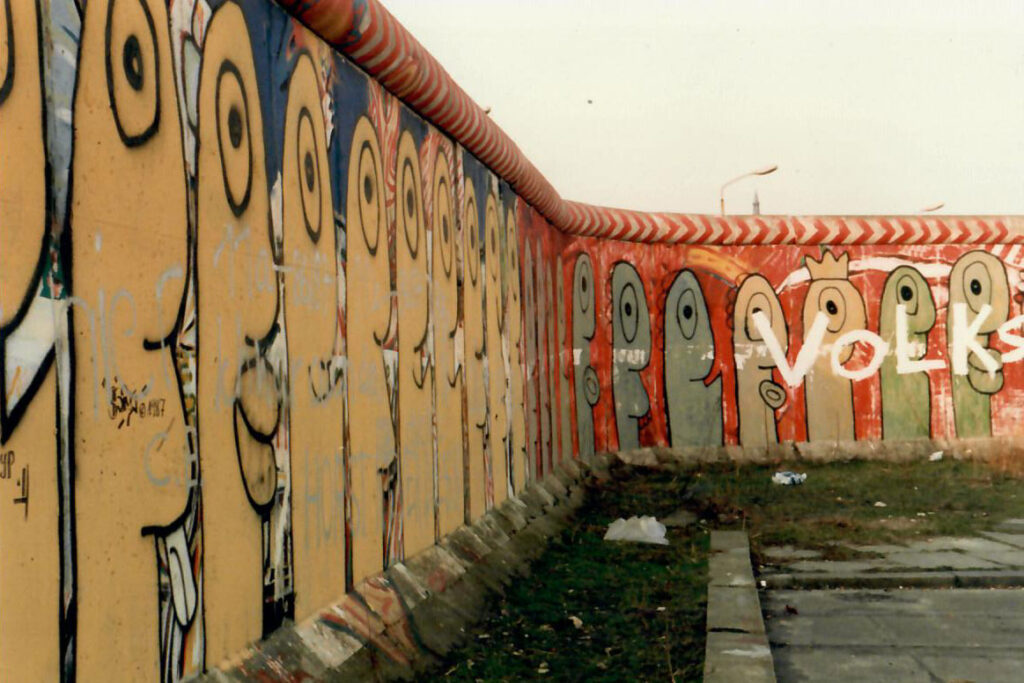
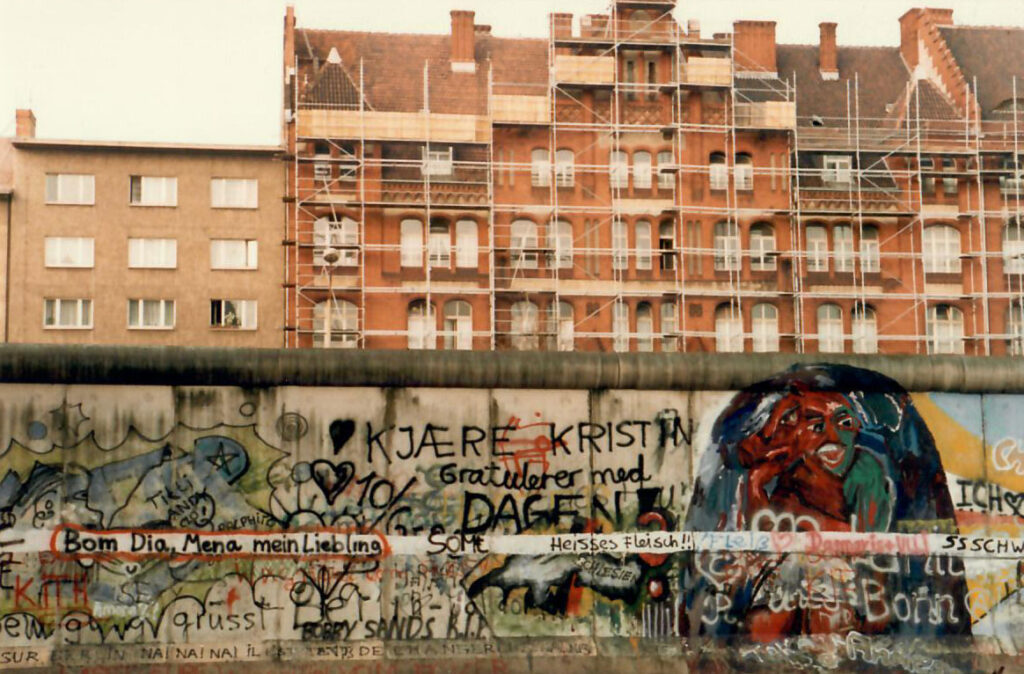
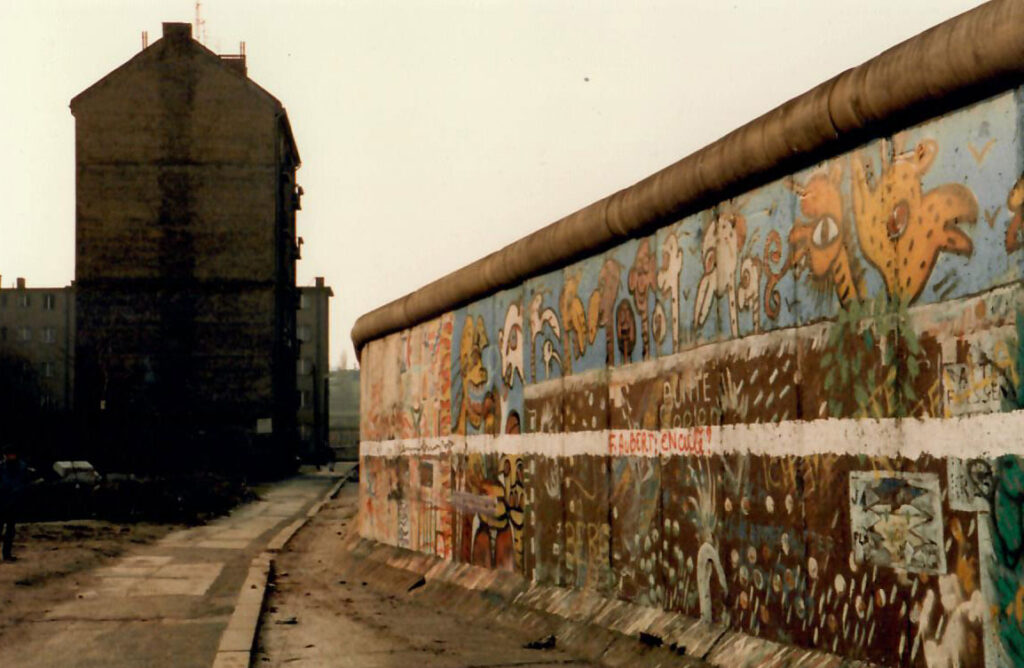
In 1981 I went to live in Berlin for 6 months. The experience was strange, exhilarating and mind expanding. I travelled there by train, journeying through an East German landscape of tanks and soldiers to the West German island that was a divided Berlin. Berlin was occupied at the time by allied forces of Britain, America, France and the Russians on the Eastern side. I was fascinated by the wall graffitied by artists from around the world.
So strange to be able to visit the eastern part through Check Point Charlie, changing money to East German Marks which could hardly buy anything. Then to see the car free streets apart from a few Trabants.
Billie Holiday
When my heart has been broken, Billie has always been there to hold my hand.
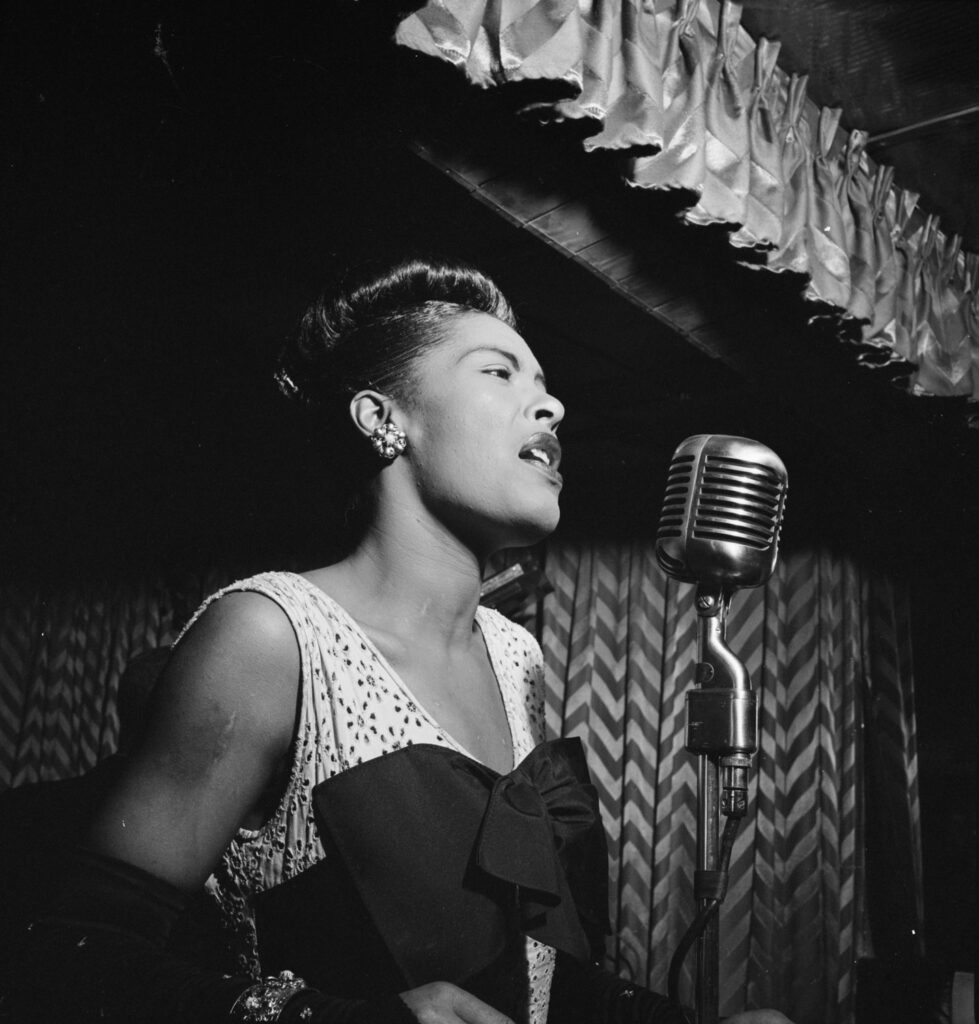
Billie Holiday was born Eleanora Fagan in 1915 in Philadelphia. As a teenager she began singing in clubs in Harlem. There were a number of racist incidents throughout her career. While working with Artie Shaw’s all white band in 1938, Billie was asked to use the service elevator in the Lincoln Hotel in New York instead of the passenger elevator because white patrons in the hotel complained.
In the late 1930s she was introduced to Strange Fruit, a song based on a poem about lynching written by Abel Meeropol, a Jewish schoolteacher from the Bronx. For her performance of “Strange Fruit” at the Café Society, she had waiters silence the crowd when the song began. During the song’s long introduction, the lights dimmed and all movement had to cease. As Holiday began singing, only a small spotlight illuminated her face. On the final note, all lights went out, and when they came back on, Holiday was gone. en.wikipedia.org/wiki/Billie_Holiday
Billie Holiday’s music gives me comfort when I’m sad, she has an authenticity to her voice that few singers have. I’ve played her music over and over again she finds a place to tap into my feelings creating something raw and real.
Ain’t nobody’s business if I do
Art
Robert Rauschenberg
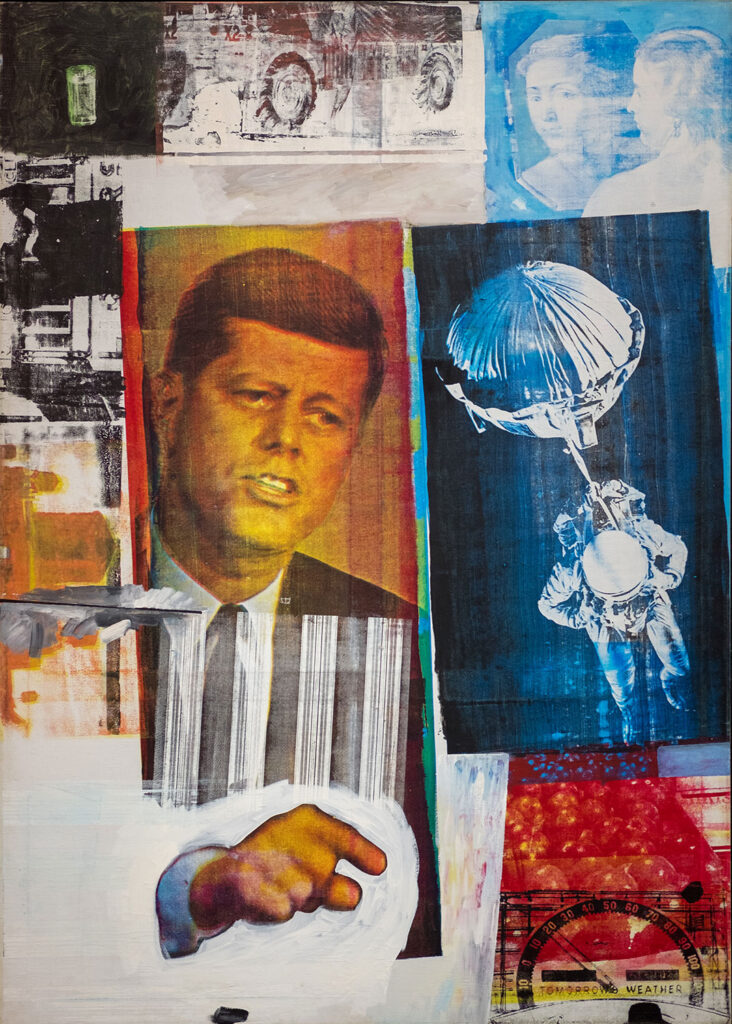
I first really became aware of Robert Rauschenberg’s art at the Tate Modern exhibition in 2016.
In his Wikipedia page it says that he is a painter, sculptor, printmaker and performance artist. This gives an idea of someone who is restless and forever seeking out new ways of expression, constantly trying out new techniques. Moving away from conventional materials he finds rubbish discarded in the street, umbrellas, buckets, light bulbs, planks of wood and incorporates this with dripping paint to create his ‘combines’.
Using a quilt with paint dripping downwards, the story goes that Rauschenberg lacked the funds to buy a canvas so he used his own quilt.
“And if it wasn’t a surprise at first by the time I got through with it, it was. So the object itself was changed by it’s context and therefore became a new thing.”
In 1958 he began using printed pictures and photographs. He soaked the images in solvent and then transferred them to his art. His work was reflective of the time in which he lived using imagery of John Kennedy, Martin Luther King, the moon landing. He called attention to what was going on in the world.
Film
Little Miss Sunshine
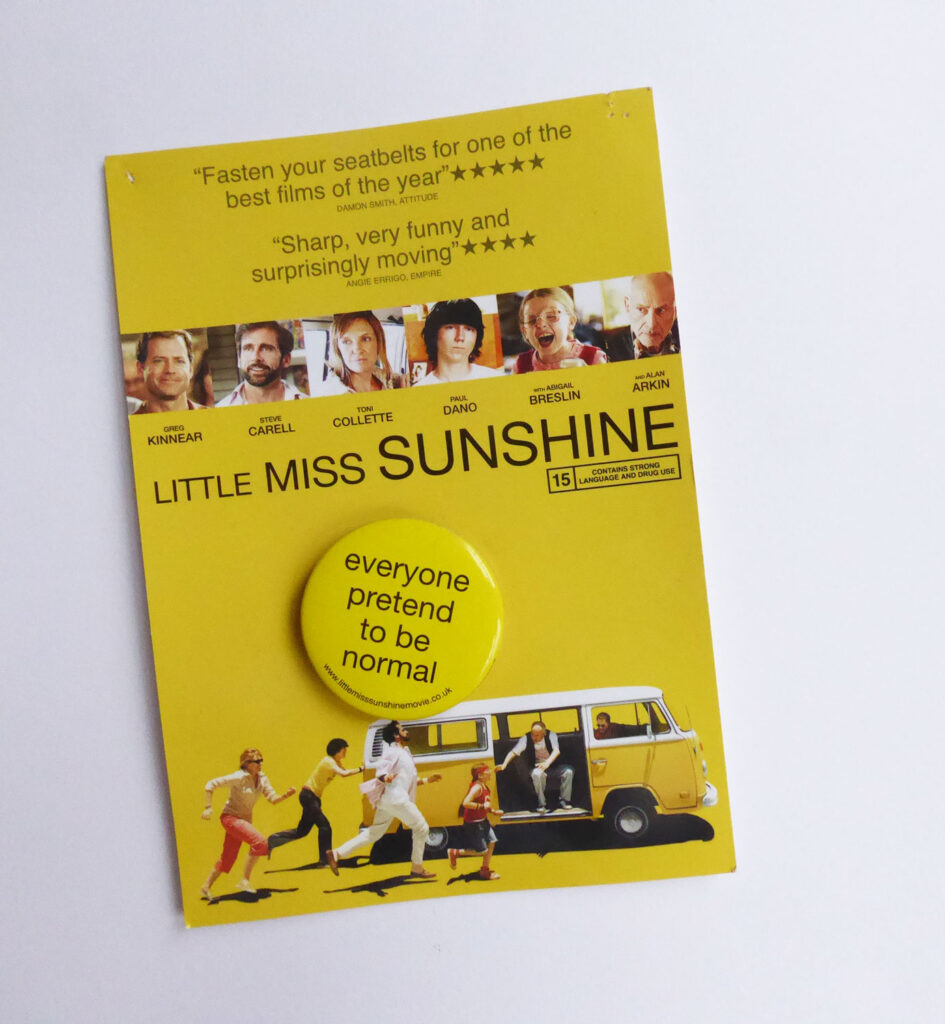
I have seen Little Miss Sunshine approximately six times, I love it and there is one particular scene near the end of the film which makes me cry with laughter every time I see it.
The film is about a dysfunctional family, living in Albuquerque, New Mexico. The family come together in a yellow VW van for a road trip to take daughter Olive to a beauty pageant in Redondo Beach, California. Members of the family all have their issues but seem to get along with each other on the trip for the sake of Olive. Olive seems mis-matched to be in a beauty pageant she’s very different from the other girls.
When it comes to the talent part of the competition Olive dances to Super Freak by Rick James while doing a strip tease, a dance taught her by her Grandfather. The organisers try to get her off stage but the family come and join her in the dance.
The film does have some dark moments, these are a contrast to moments of pure joy, the van breaking down, the horn getting stuck, the dance sequence near the end of the film. There’s something about a road trip which brings out different aspects of people’s personalities, we see the best and the worst of the family.
Prior to writing the script, Michael Arndt, scriptwriter read in a newspaper about Arnold Schwarzenegger speaking to a group of high school students and saying “If there’s one thing in this world I hate, it’s losers. I despise them.” As a result, Arndt developed his script lampooning the thought process: “And I thought there’s something so wrong with that attitude … I wanted to … attack that idea that in life you’re going up or you’re going down … So to a degree, a child beauty pageant is the epitome of the ultimate stupid meaningless competition people put themselves through.” Co-director Jonathan Dayton also commented on the importance of the pageant to the film: “As far as the pageant goes, it was very important to us that the film not be about pageants. It’s about being out of place, it’s about not knowing where you’ll end up. https://en.wikipedia.org/wiki/Little_Miss_Sunshine
Place
The Horniman Museum
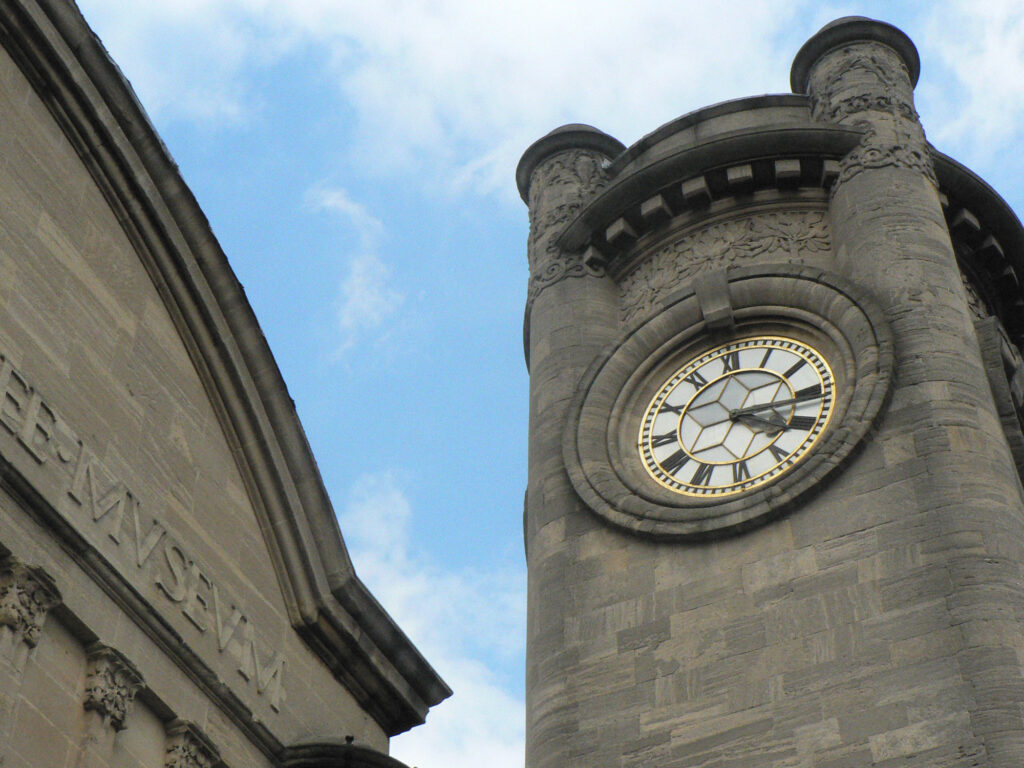
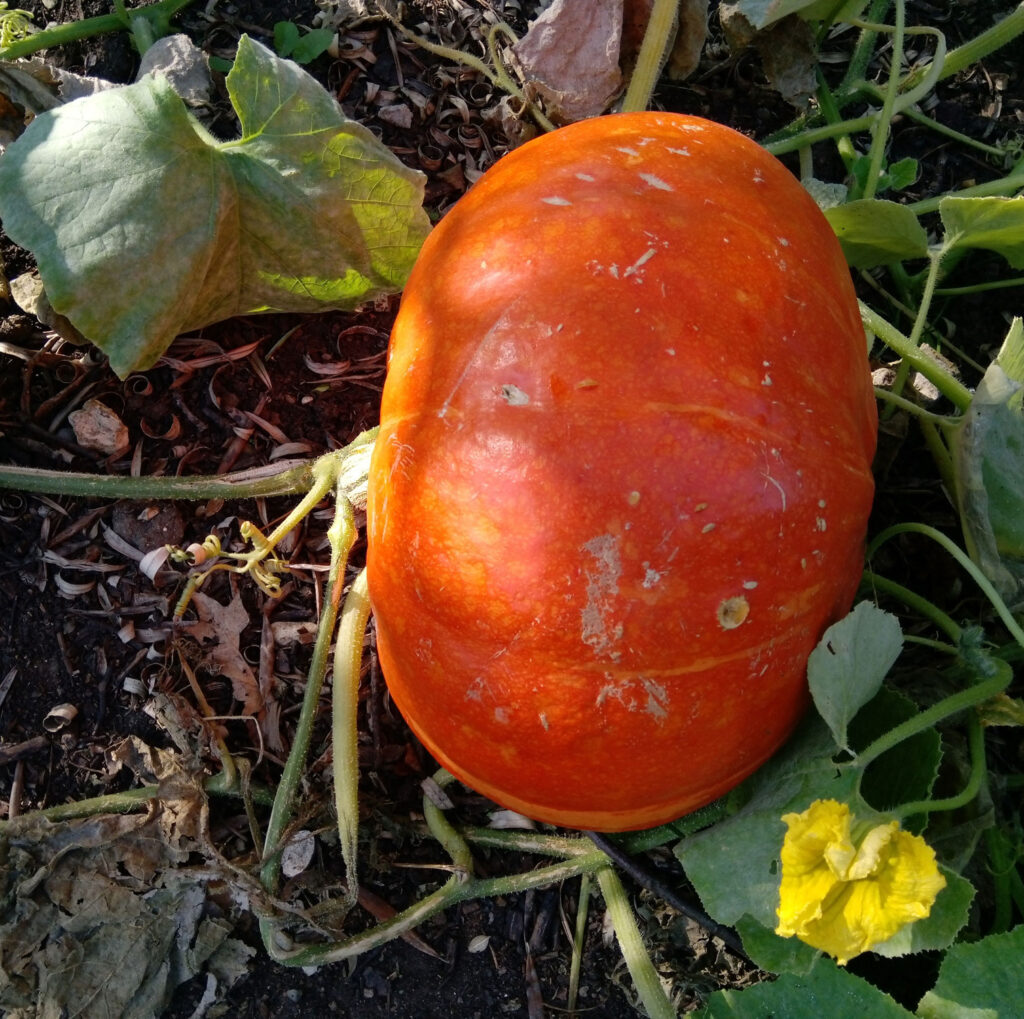
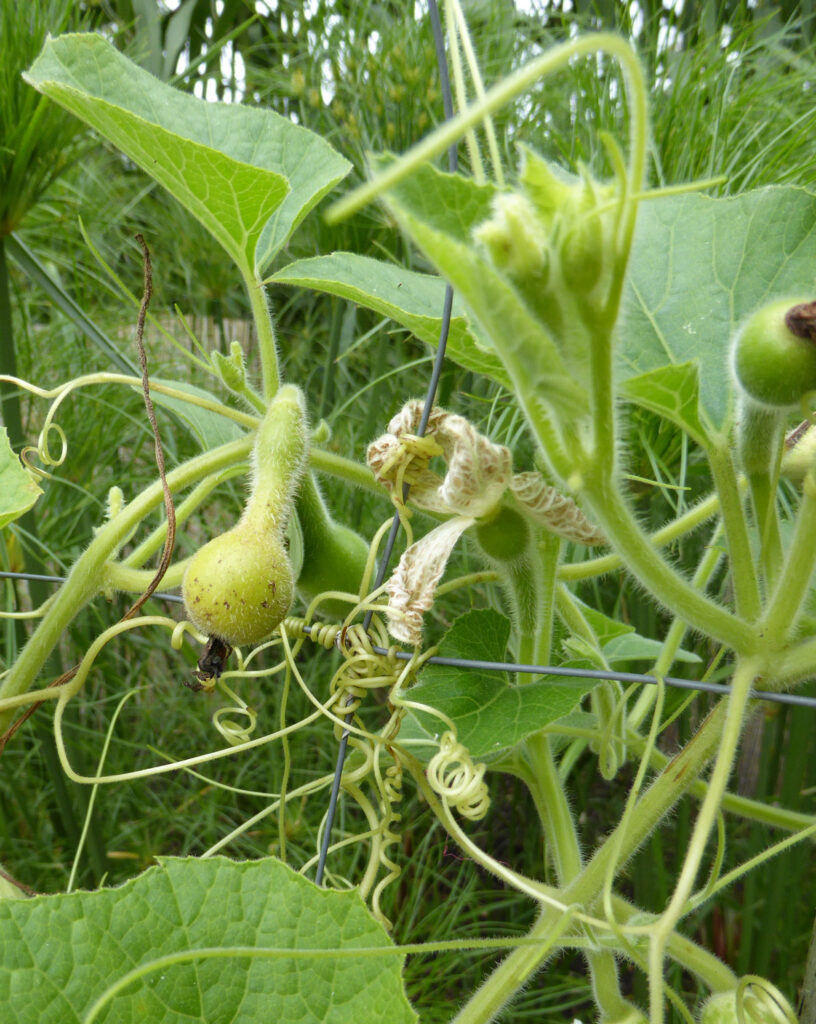
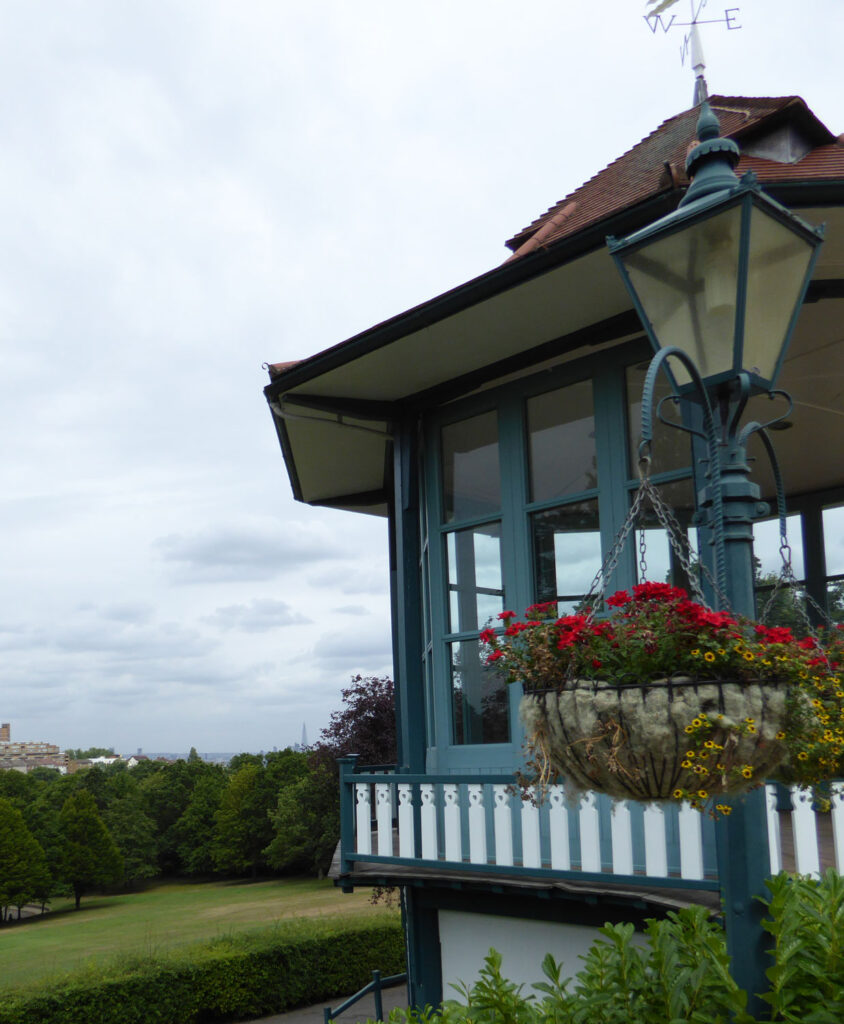
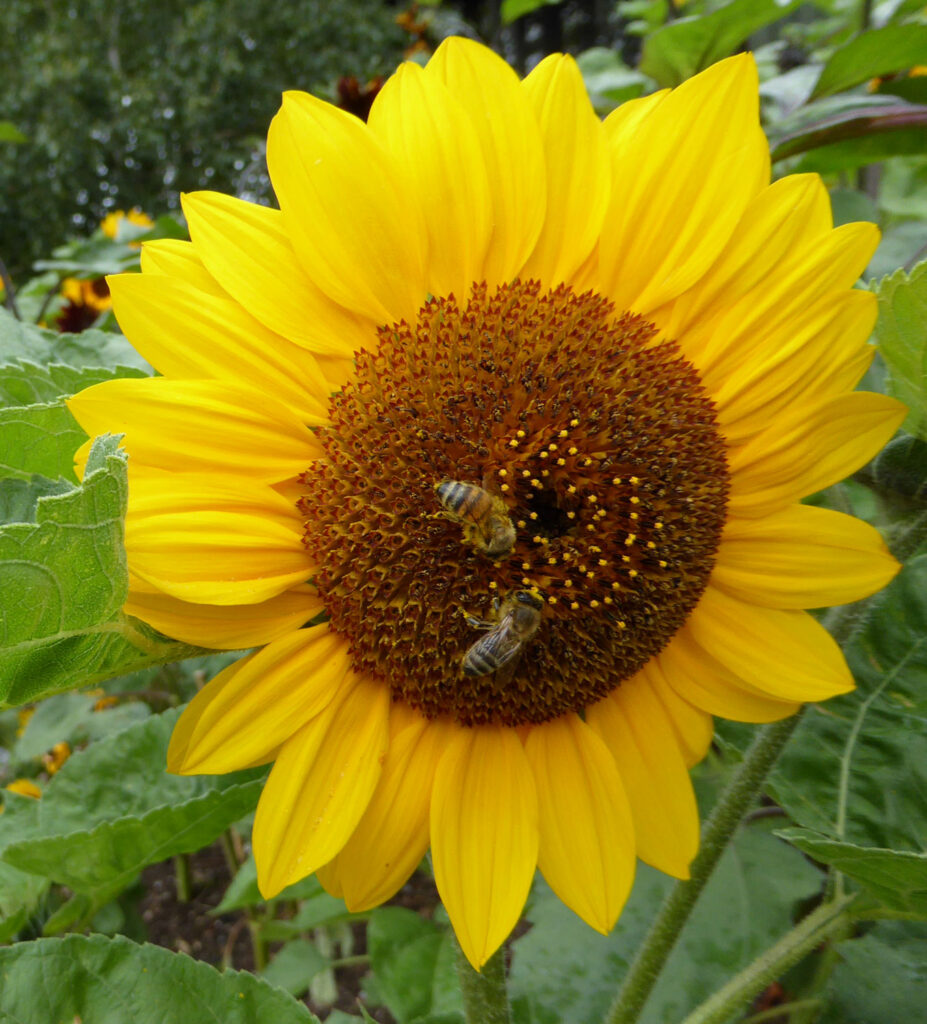
The Horniman Museum gardens in Forest Hill, South East London, a place I come to sit and think, reflect and observe. The view is incredible, you can see right across London to Wembley stadium and beyond. Lying in the gardens in Summer, I’ve seen a Buddhist monk with a gong bless the grounds, exotic butterflies in iridescent blues and greens housed in the humidity of the butterfly house. Extraordinary pumpkins grow and happy bees land on brilliant yellow sunflowers.
Woman in her yellow dress,
Sound declines,
Breeze blowing pages, waiting for calm,
Bird call, tree rustle,
Strand of forgotten song playing in my head
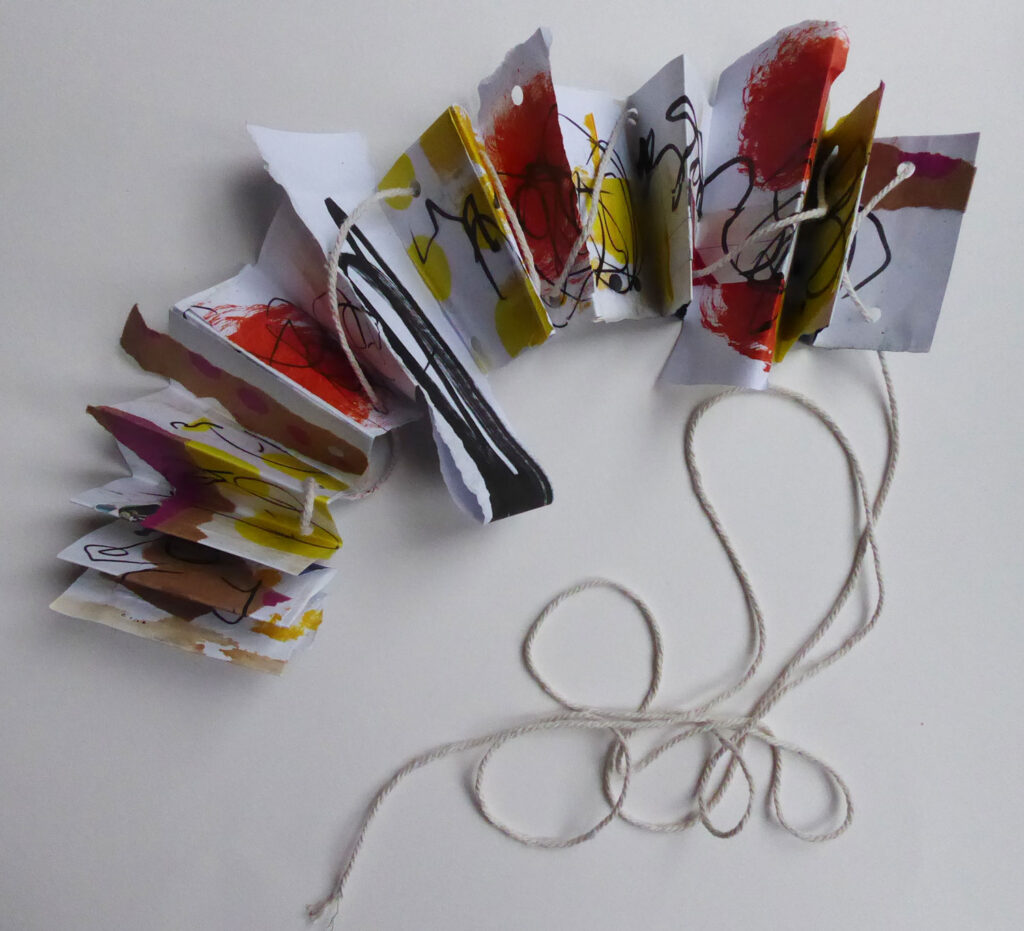
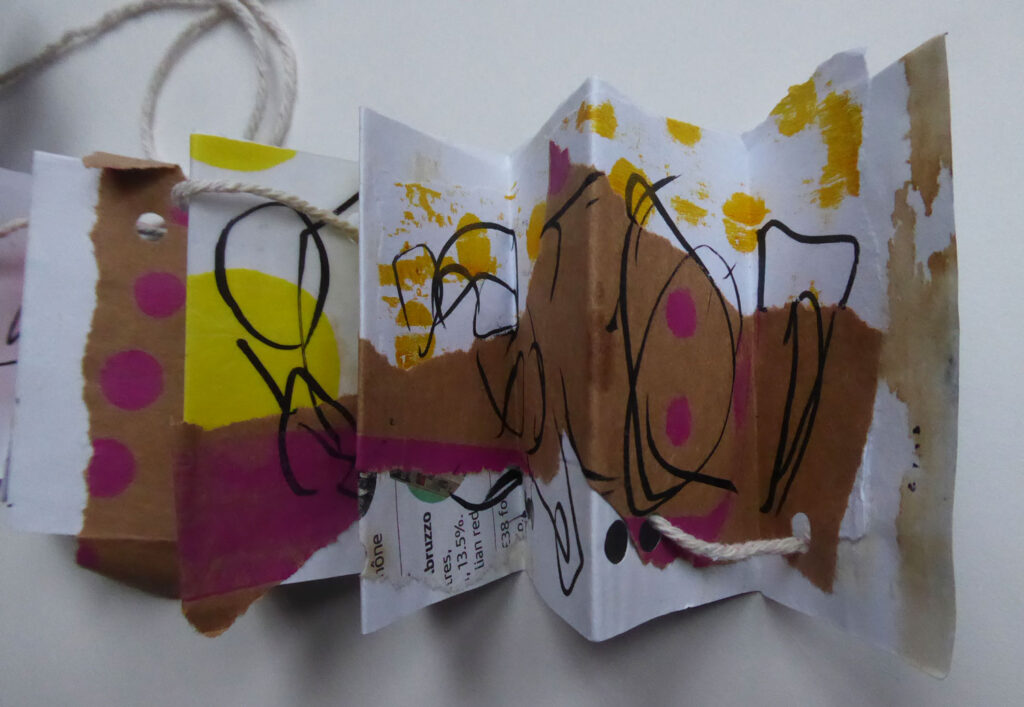
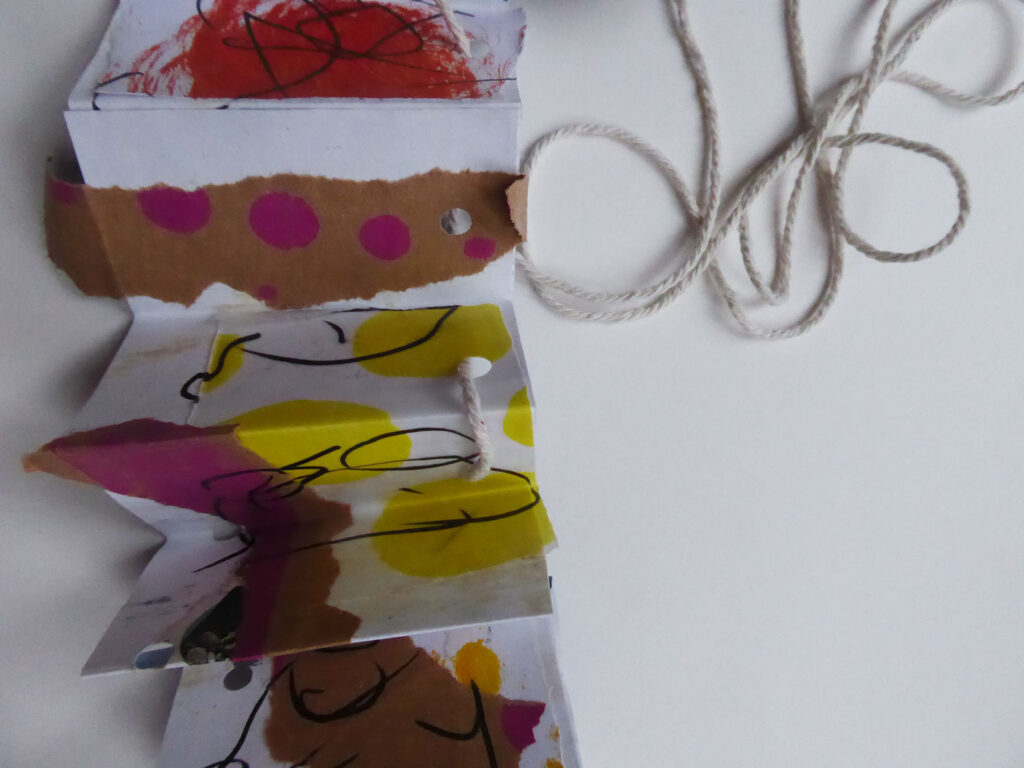
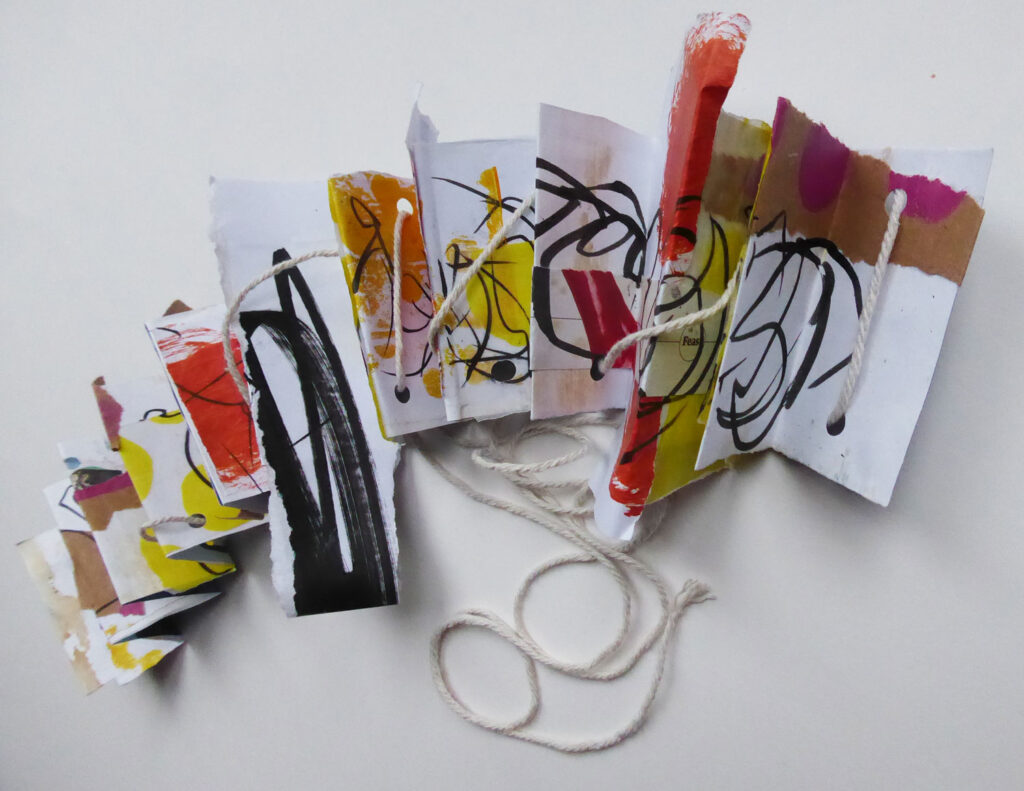
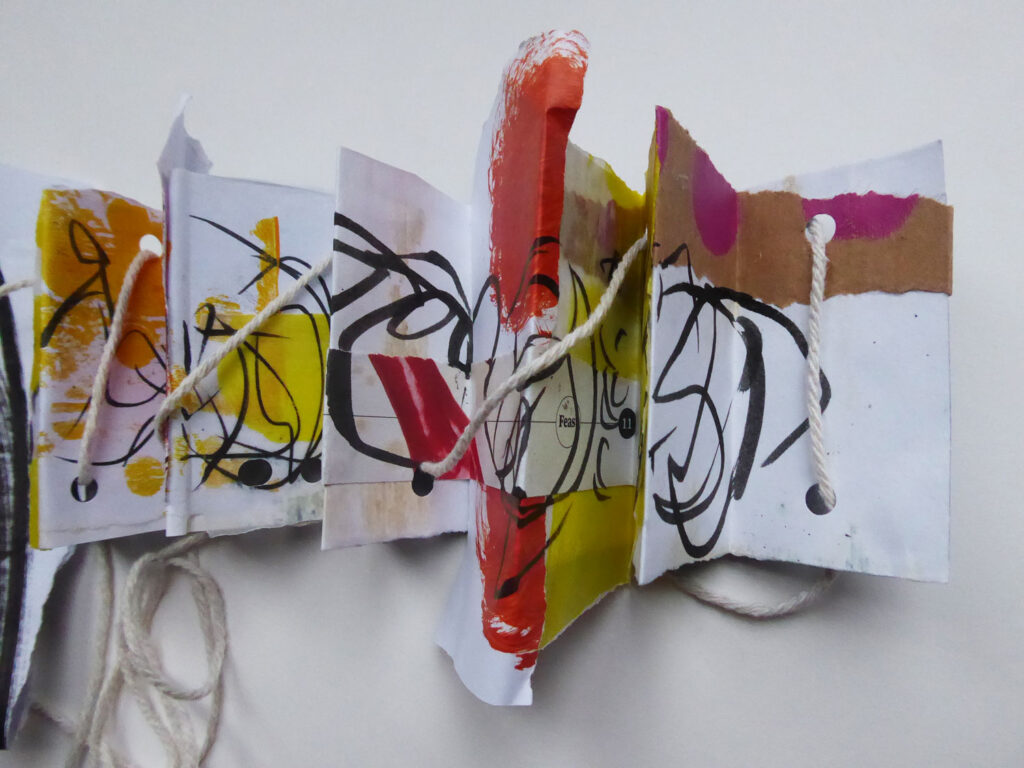
An expressive book in response to Sue Baker Kenton’s first project as part of a Year in Print at City Lit. How I feel when I hear the word print or printmaking, chaos, confusion, counterculture, collage. I think about Dave Carson’s The end of print, banners at demonstrations, photocopied flyers and posters, fanzines. The smell of the ink and the texture of the paper.
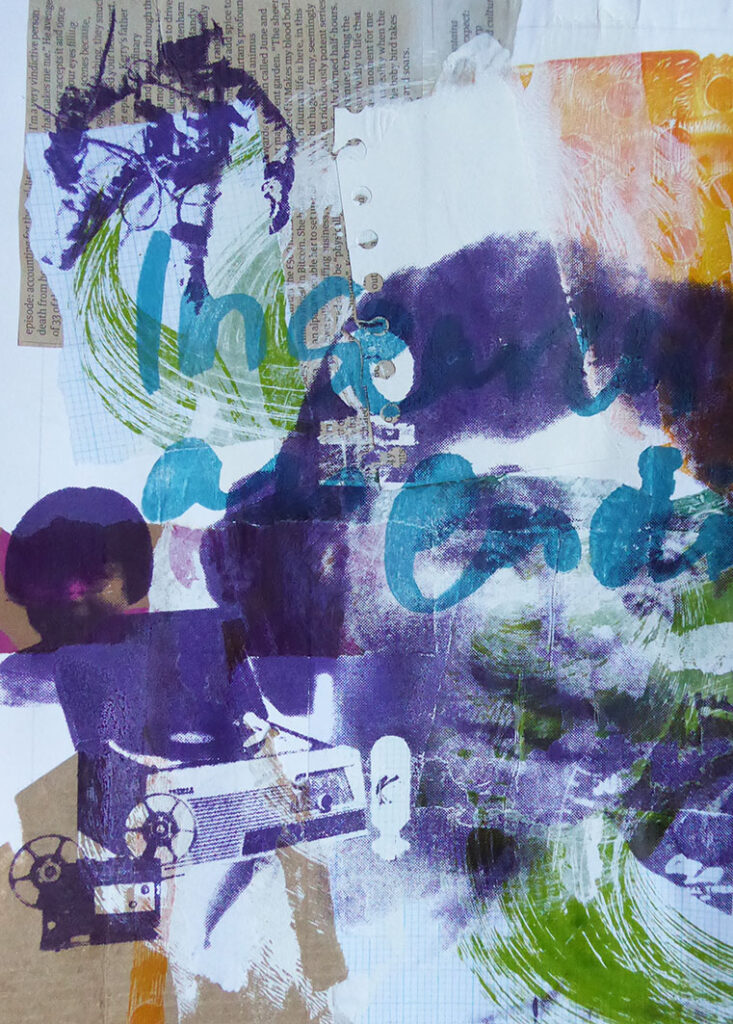
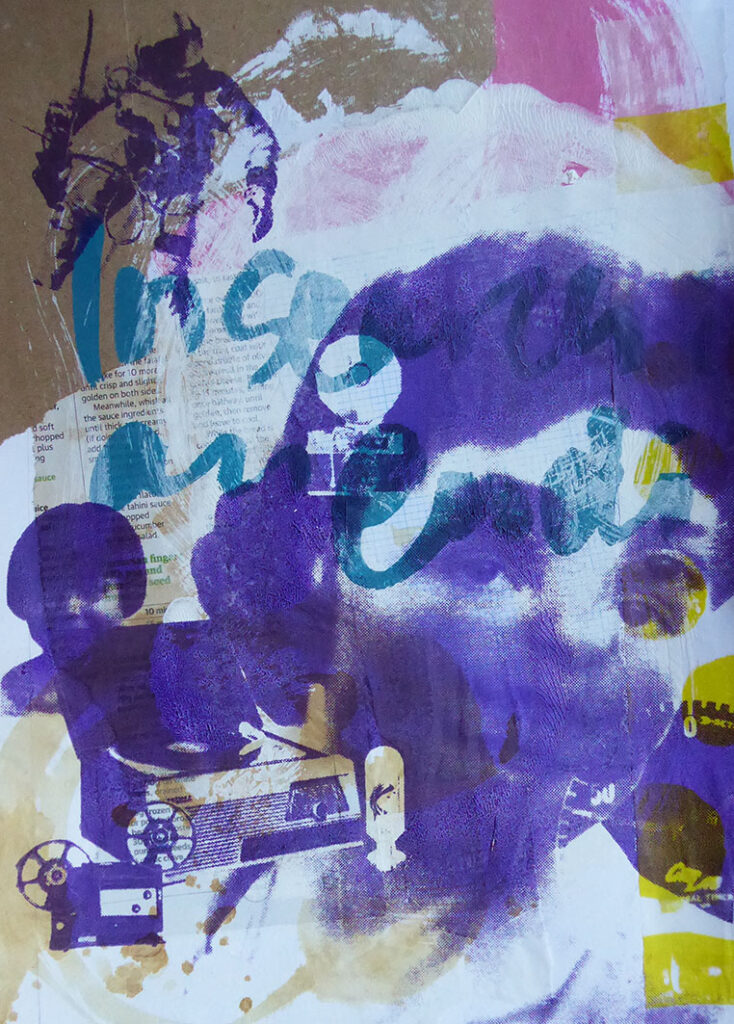
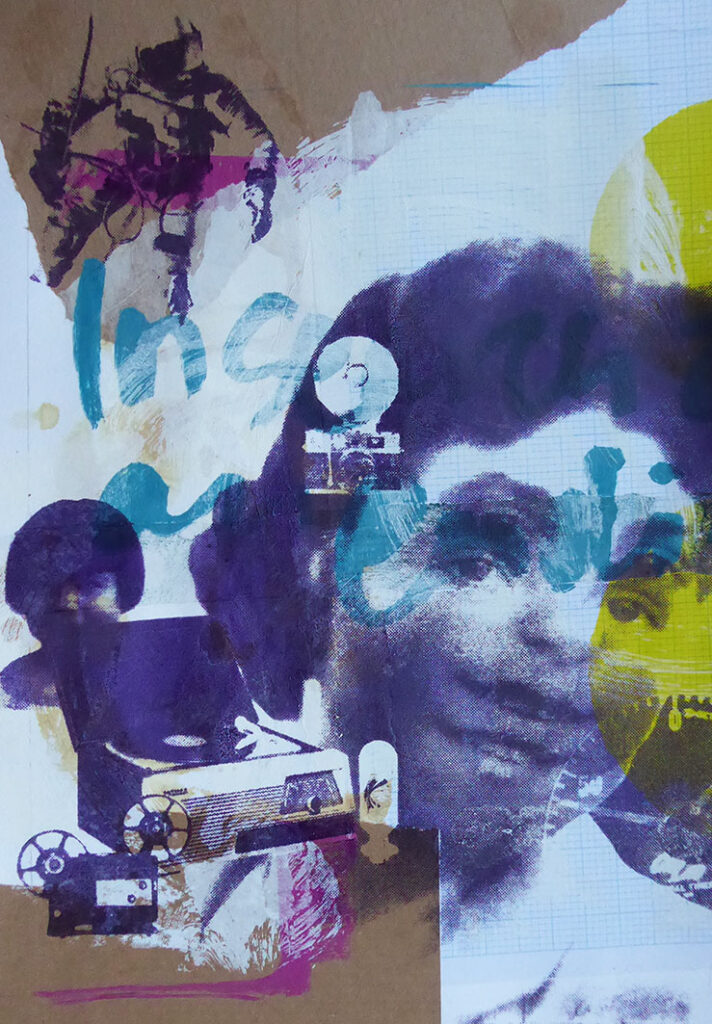
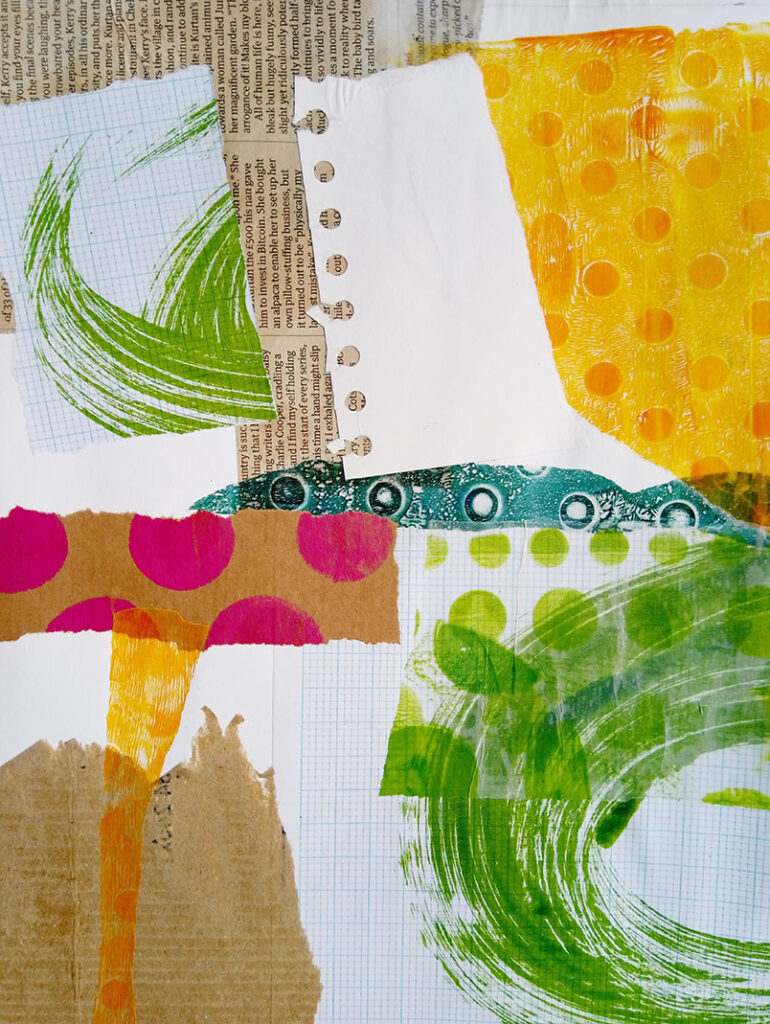
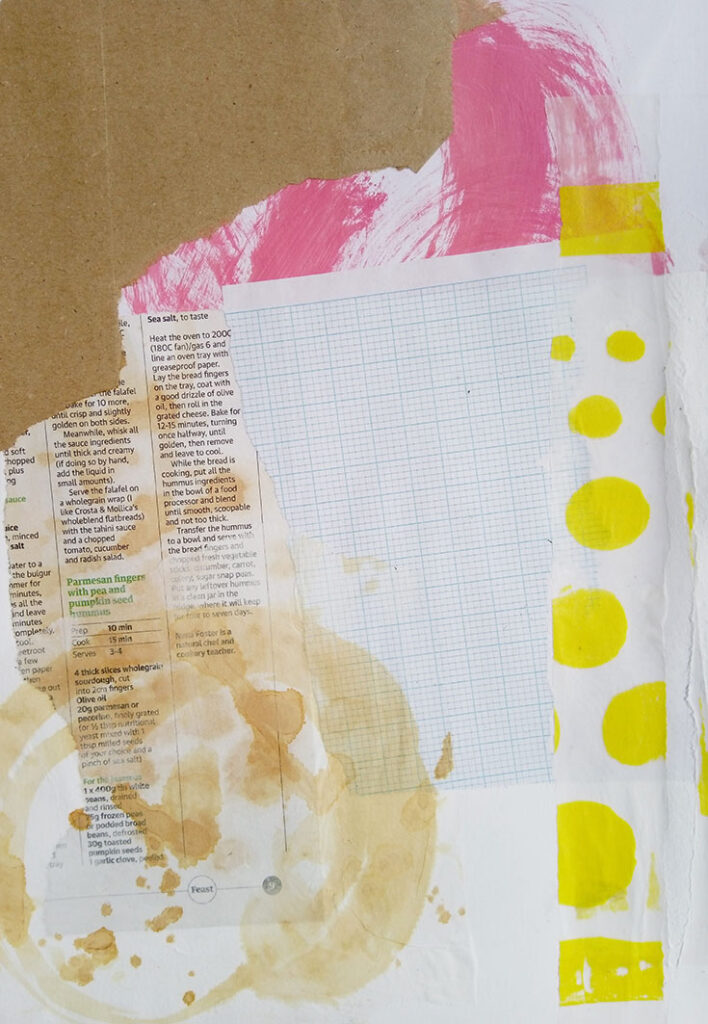
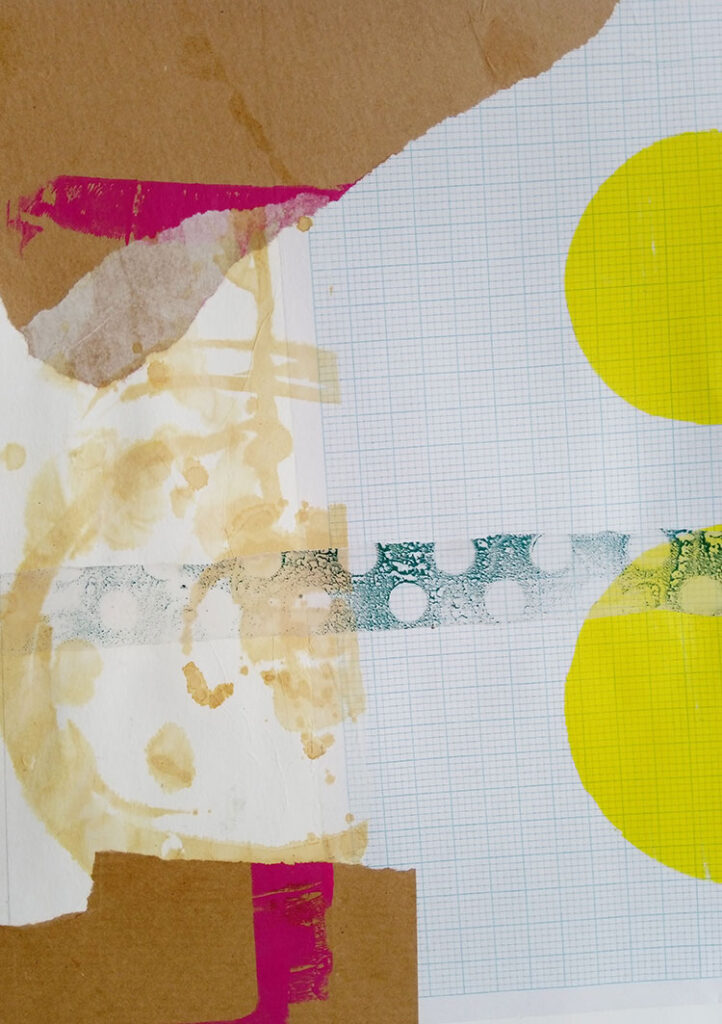
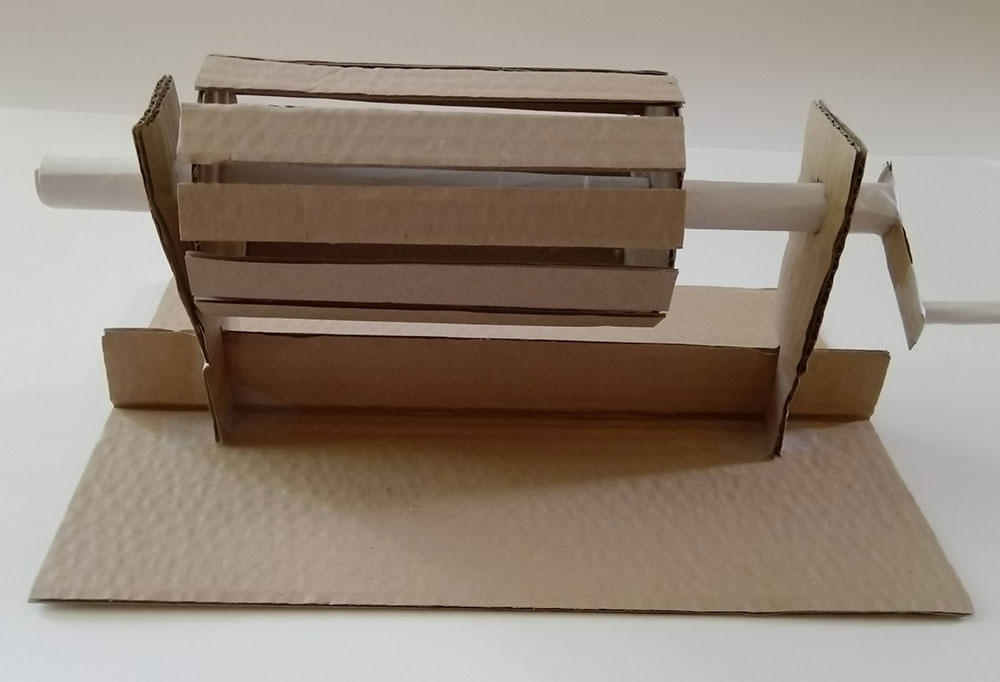
Replica cardboard aeliophone constructed as part of a class with Adam Hogarth at the City Lit. An idea for creating sound for my video Houses.
Dreamscape video based on David Holah’s class Do Undo Redo at City Lit. Using cyanotype prints produced at the beginning of the course, I overprinted them with mono prints. Clouds were formed from chicken wire. Prints, cut out and balanced in a kinetic sculpture, the elements suspended from the ceiling with cotton.
Found sound from my kitchen early in the morning added and edited with DaVinci Resolve. Experimenting with split screen editing after Monika Kita’s tutorial.
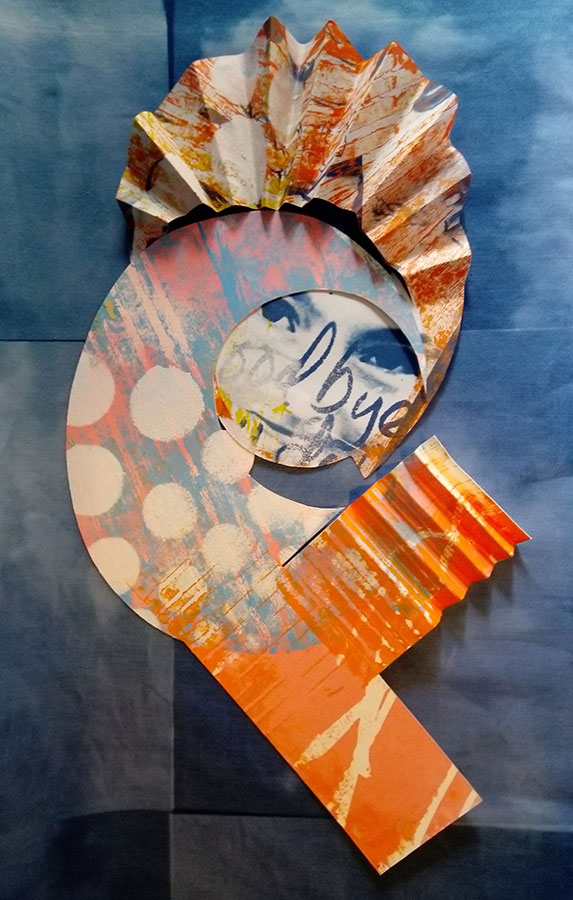
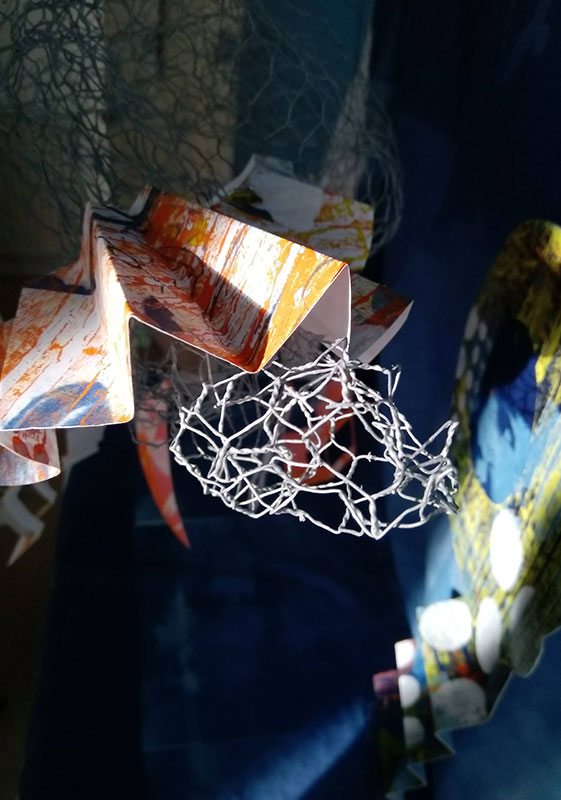
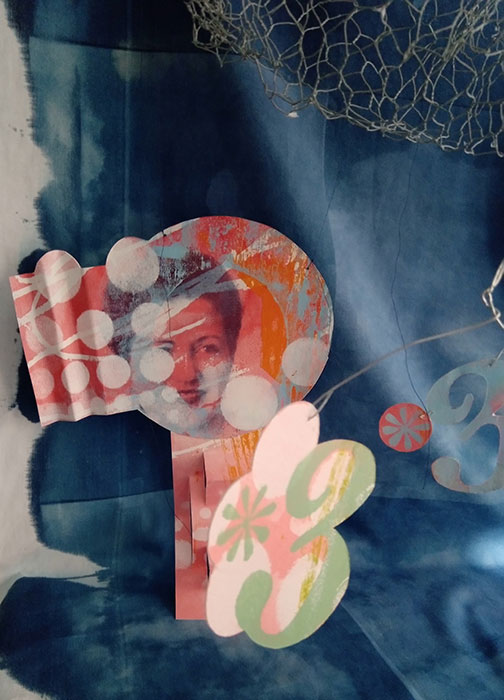
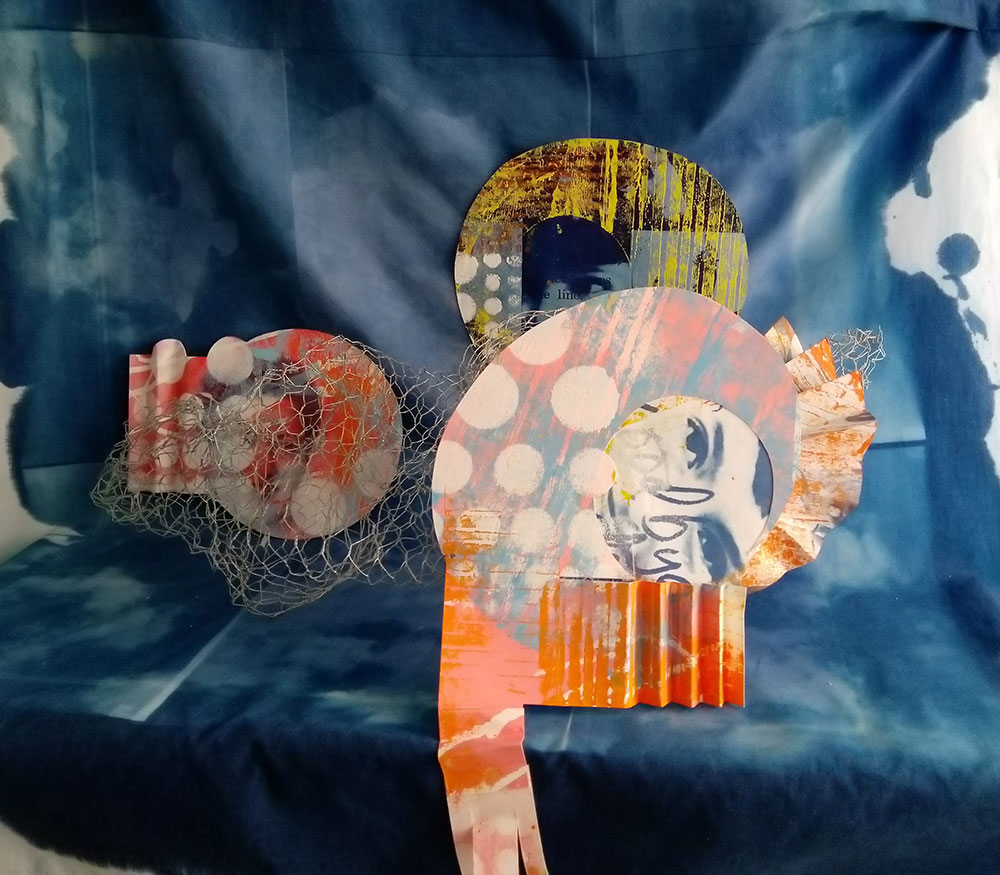





Responding to Paul’s text about a childhood memory:
“I remember the school I went to from the age of nine to twelve.
There was a traditional playground and a large hall. I remember standing on the stage and being in Mary Poppins. I made a huge image of St Paul’s Cathedral in charcoal and attaching it to a medical screen as a backdrop for ‘Feed the Birds’. And turned the head teacher’s lectern into a fireplace for the same play. I was also in charge of changing the lights. The switches were in a huge box on the wall with slides that took the light levels up and down.
I stayed at that school for three years. If I had never returned, I would have slight but happy memories.
However, I returned twice. The first time was to meet my old teachers. I went with some friends and said hallo and then felt a bit lost. We were too old to be there. There was nothing to do. The place already felt strange. The steps were very small. The school hall was not large at all. The lighting cupboard was a small box. The stage where we had performed Mary Poppins was not that far from the ground. I decided not to go back.
But I did go back twenty-two years later. I was working for a housing campaign. It was 1988. It was the height of the HIV/AIDS crisis and it was a period when anyone diagnosed with AIDS was almost certainly going to die. One of the most pioneering approaches to supporting people living with AIDS was being built in Lancaster Gate. The project was called the London Lighthouse and it was being built inside my old primary school. I mentioned to a colleague that I knew the building. It turned out that she was friends with one of the people leading the development, so I went along for a guided tour.”
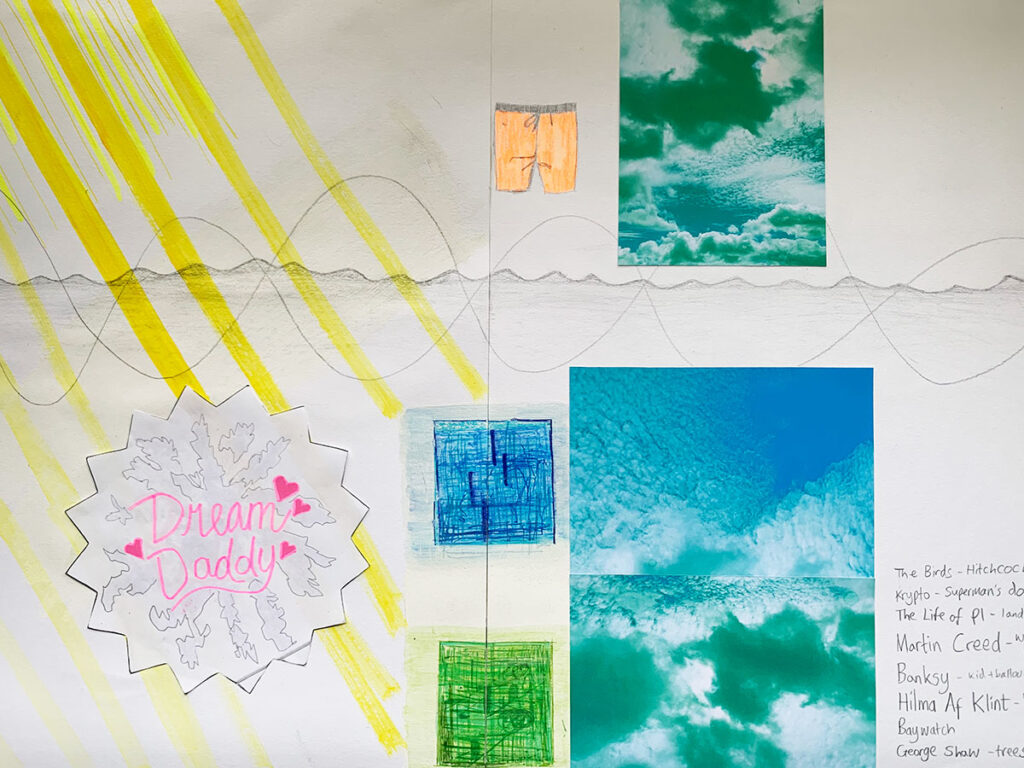
Alex’s response to my daydream text:
Horniman Park 20/6/2020
Green, white, blue
Shifting, cloud grey
Above earth, below sky,
Gong sound reverberates
Sound waves, beginning again,
Warm rays, yellow light,
Peace, happy, birds chatter,
Boy bird, white balloons,
Child wonder, investigates.
Behind dad, orange shorts
Masked man, tiny dog
Barefoot play,
Oak tree thoughts,
Thousand year song
Prepare the ground with your hopes
And I’m feeling good.
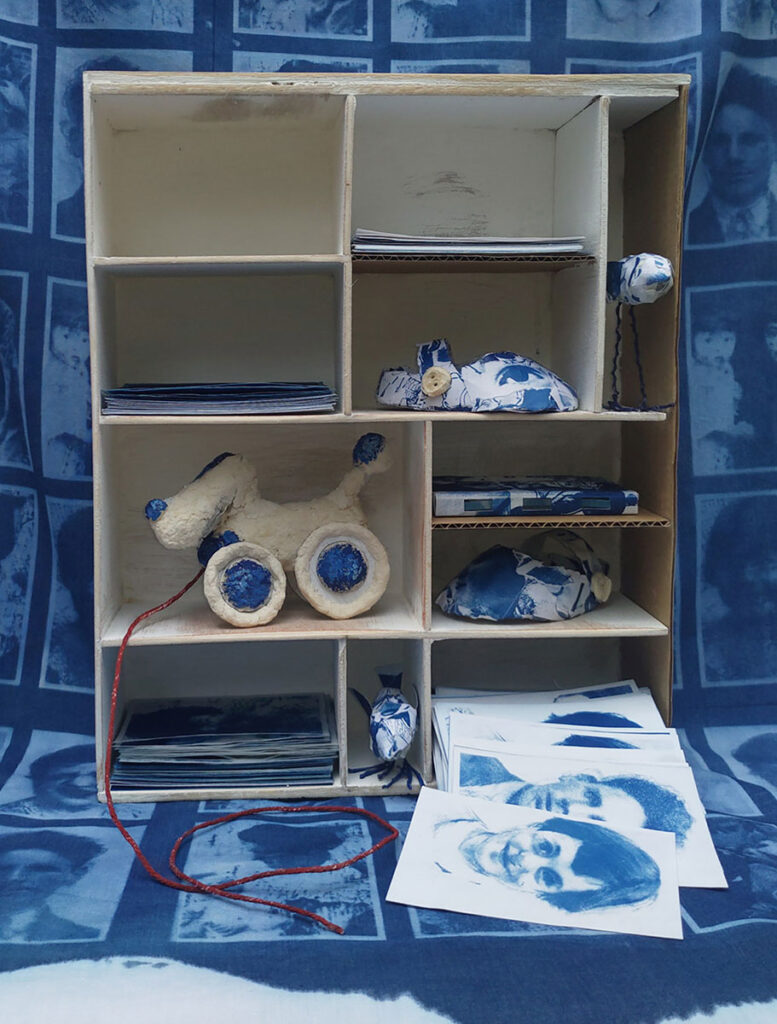
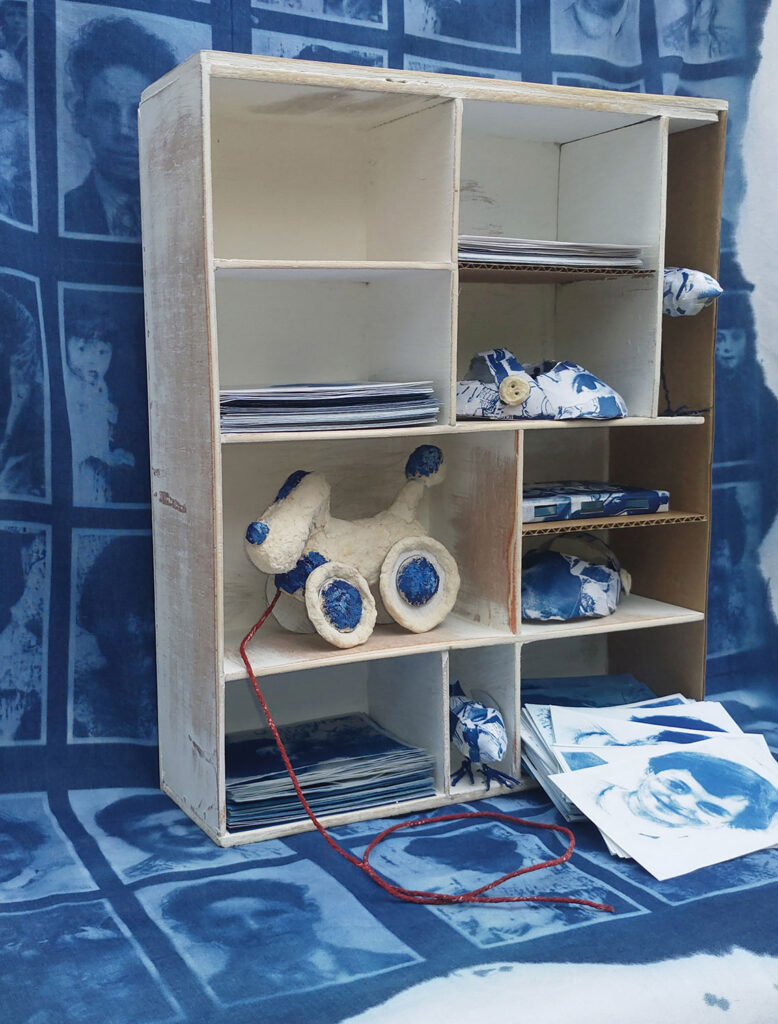
“The island is stirred up after a disappearance. People gather in little groups out in the street to talk about their memories of the thing that’s been lost. There are regrets and a certain sadness, but we try and comfort one another. If it’s a physical object that has been disappeared, we gather the remnants up to burn, or bury, or toss in the river. But no one makes much of a fuss, and it’s over in a few days. Soon enough, things are back to normal, as though nothing has happened, and no one can even recall what it was that disappeared.”
Then she would interrupt her work to lead me back behind the staircase to an old cabinet with rows of small drawers.
“Go ahead, open any one you like.”
I would think about my choice for a moment, studying the rusted oval handles.
I always hesitated, because I knew what sorts of strange and fascinating things were inside. Here in this secret place, my mother kept hidden many of the things that had been disappeared from the island in the past.”
From The Memory Police by Yoko Ogawa
Backdrop drying in the garden
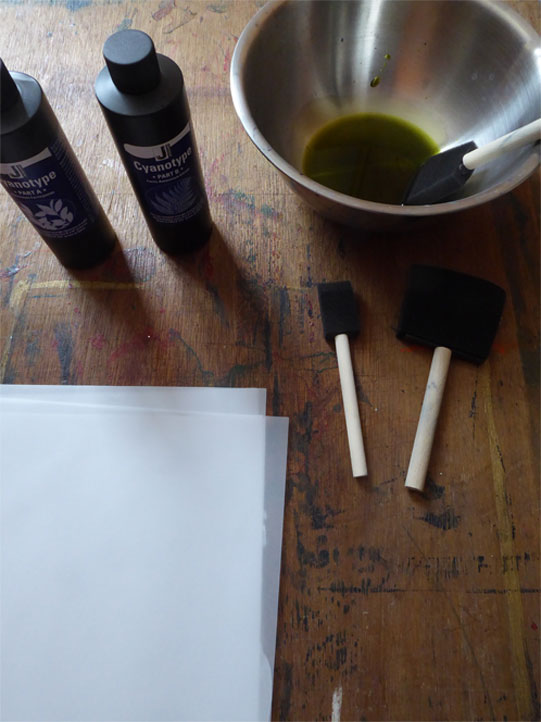
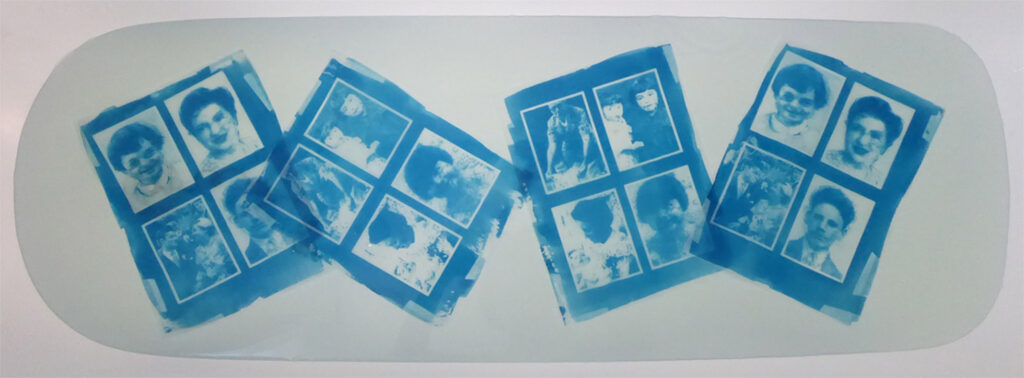
Animation using Stop Motion Studio app on my phone. Creating layered images in Photoshop, with cyanotype prints, tea stained overlays, hand drawn lettering, papier mache objects.
Quote from The Falconer by Dana Czapnik. Sound recorded in Horniman park, Forest Hill. Film includes cyanotype prints, tracing paper overlays with tea staining, gel plate printing.
Animation using photographs of found objects and sound.
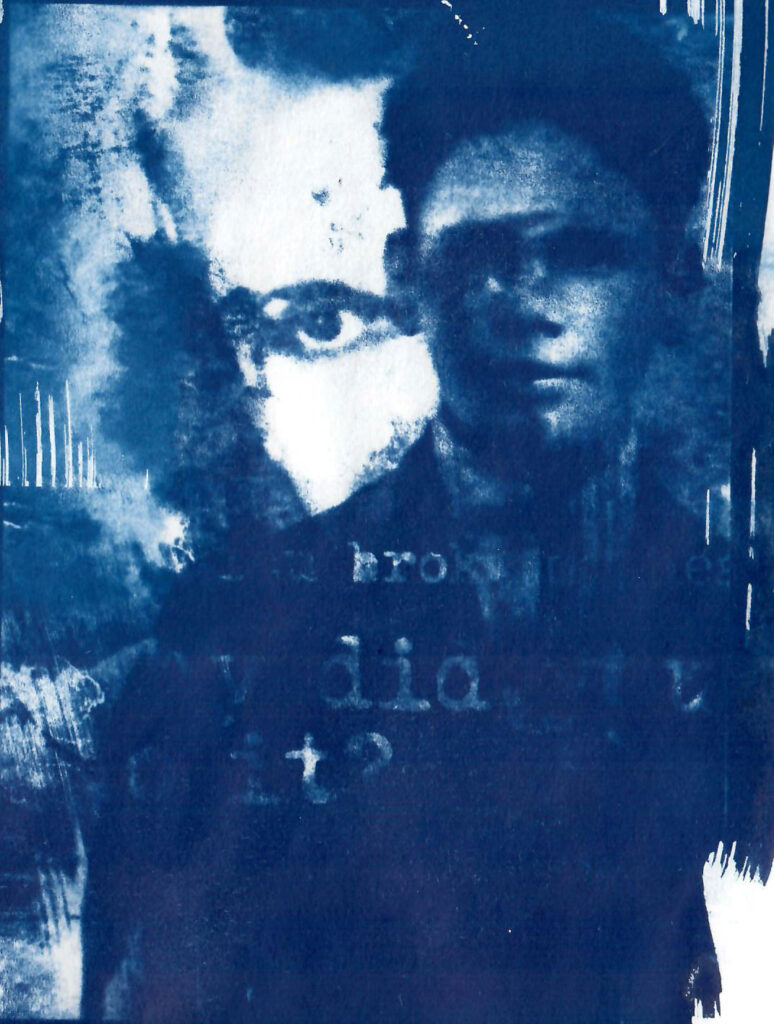
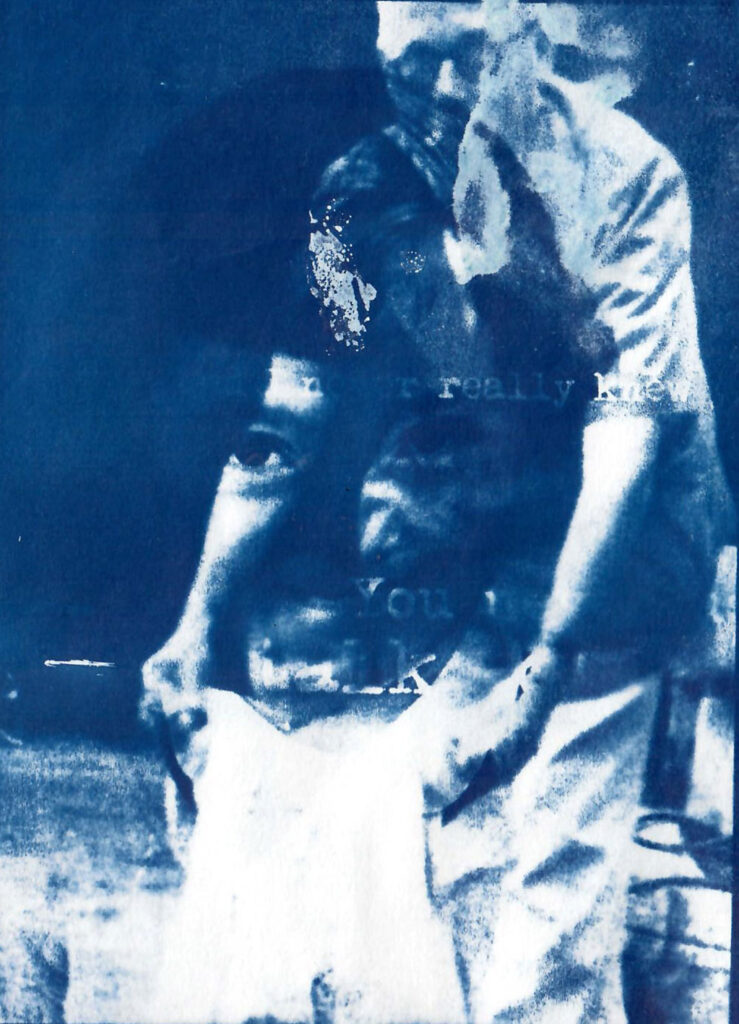
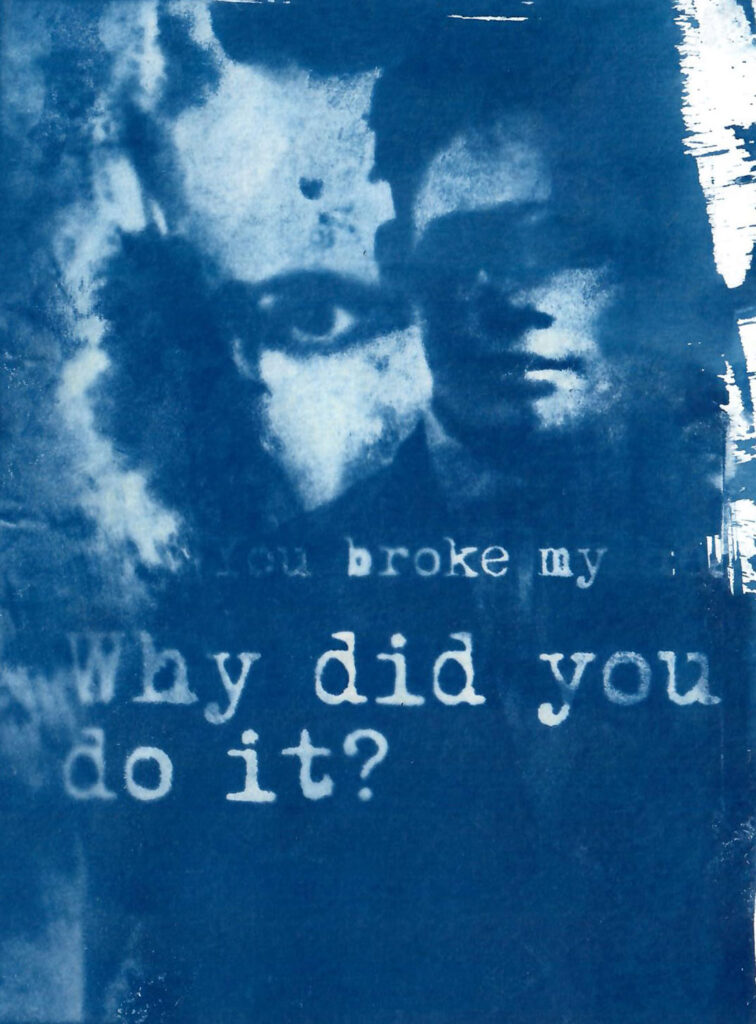

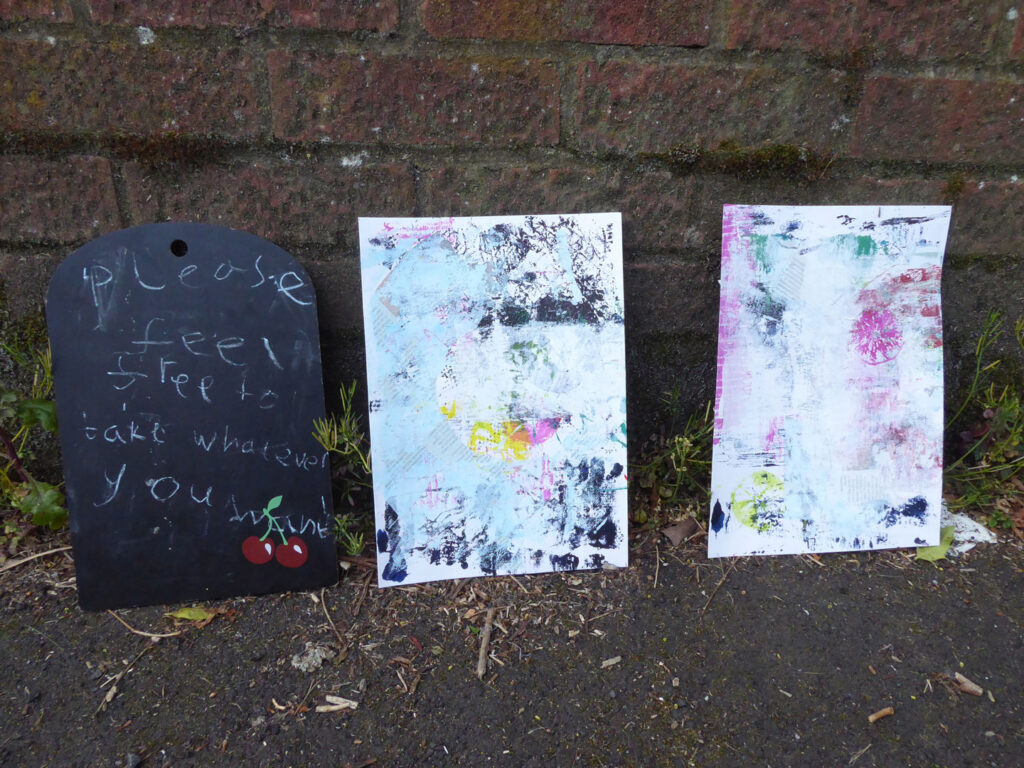
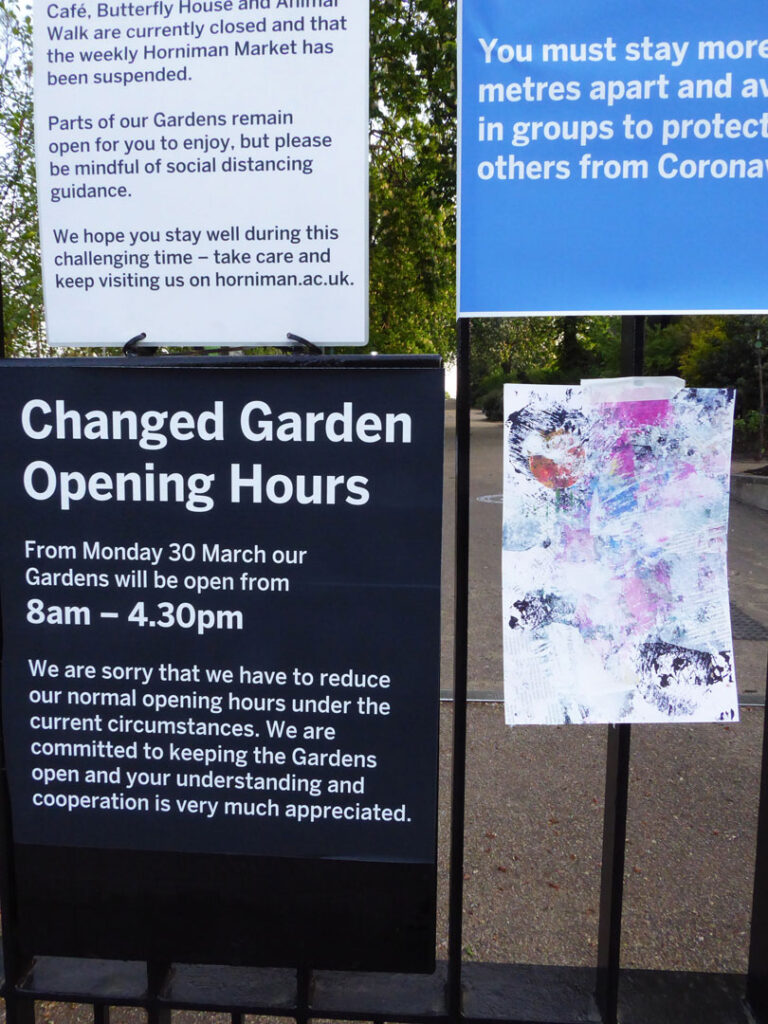
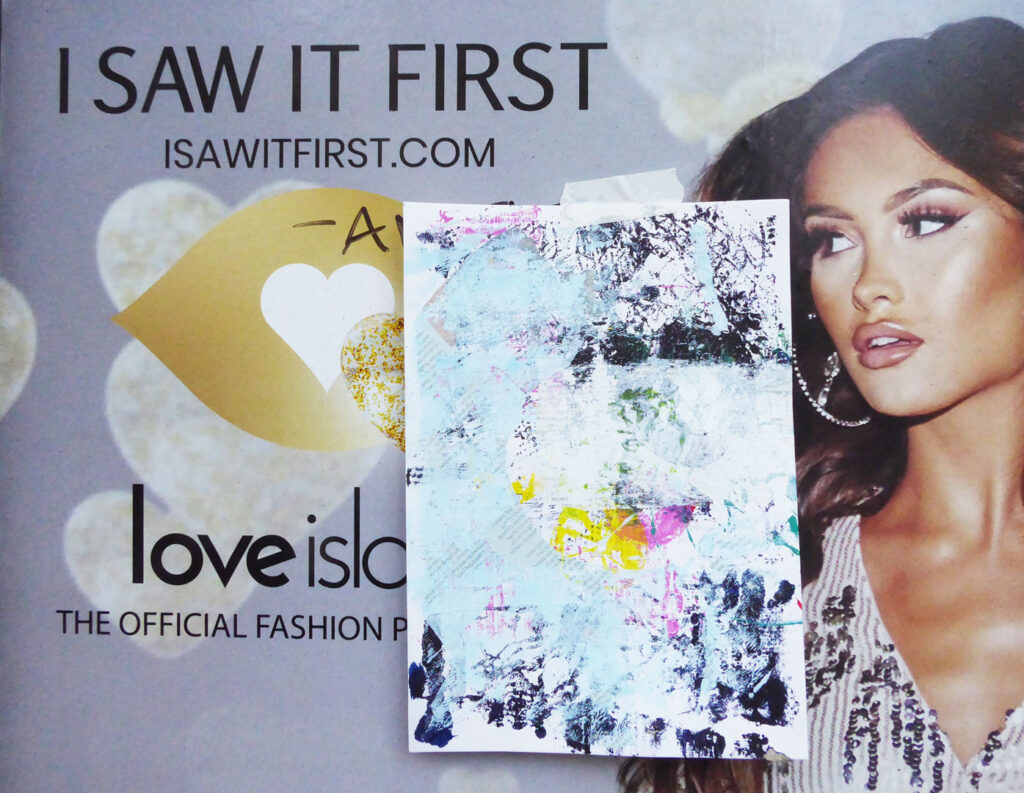
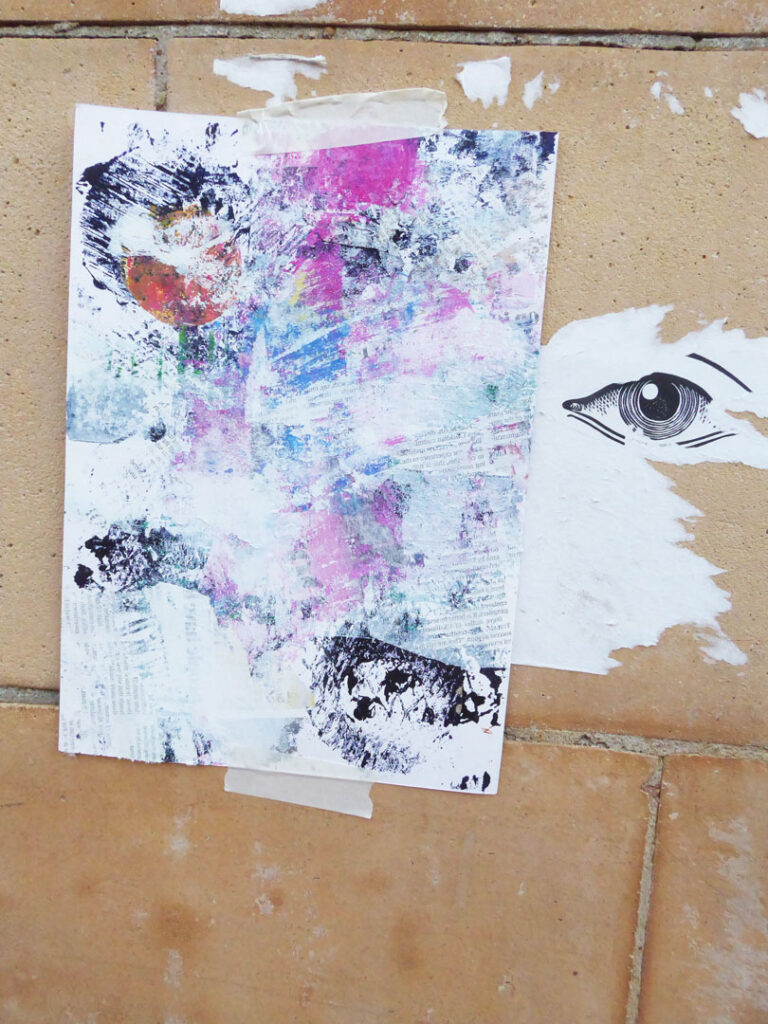
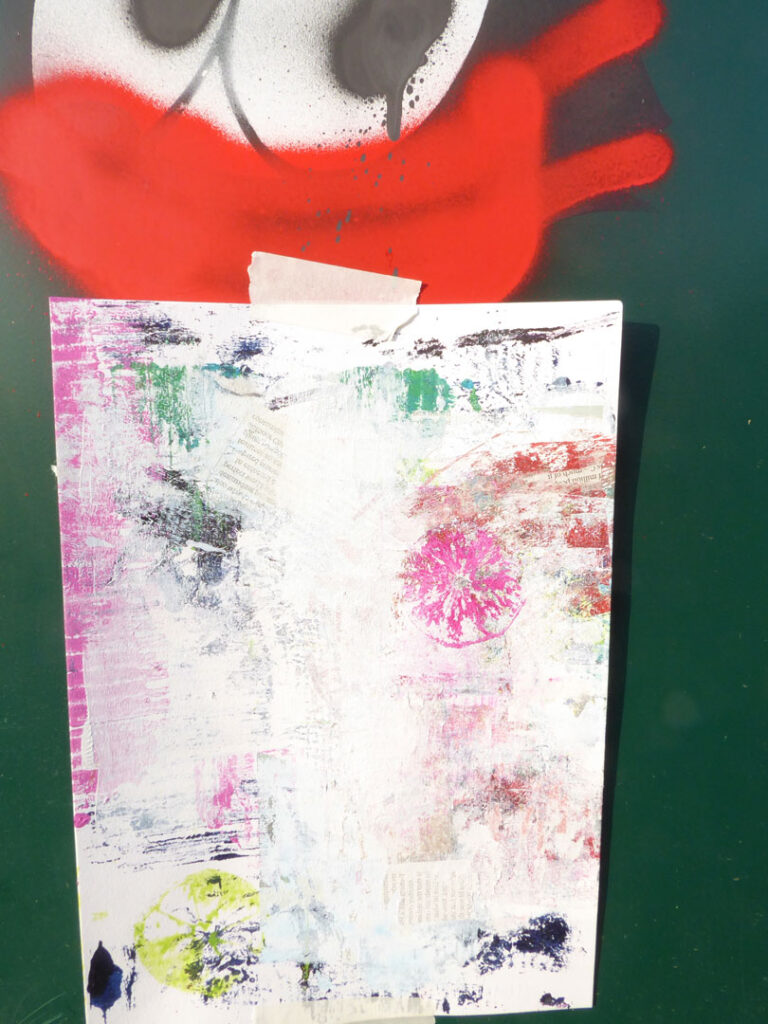
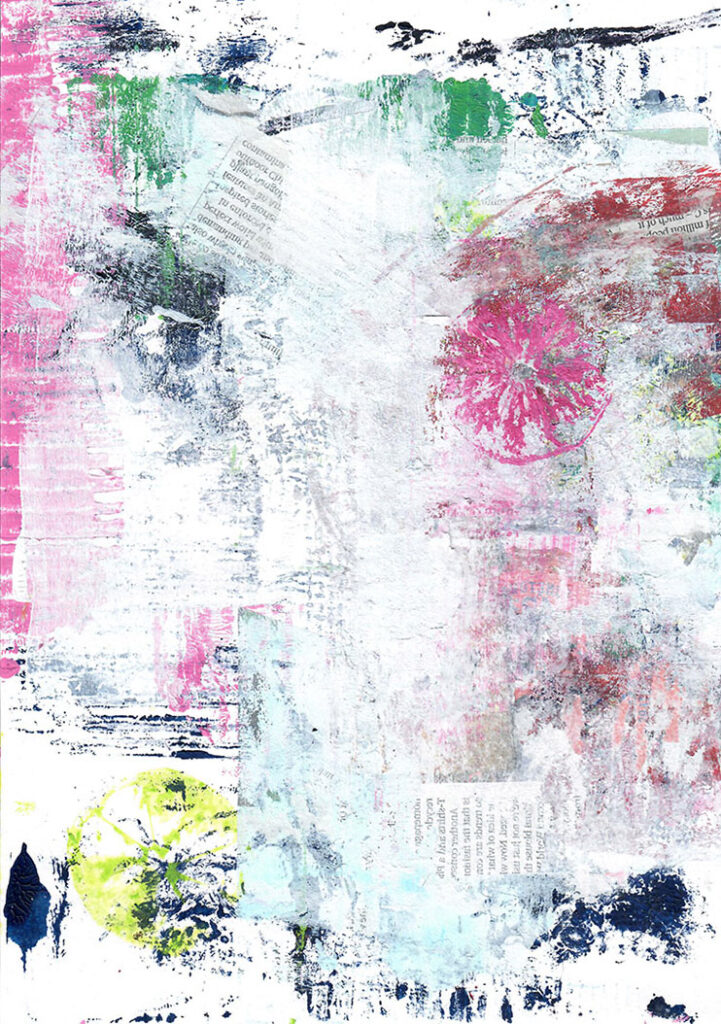
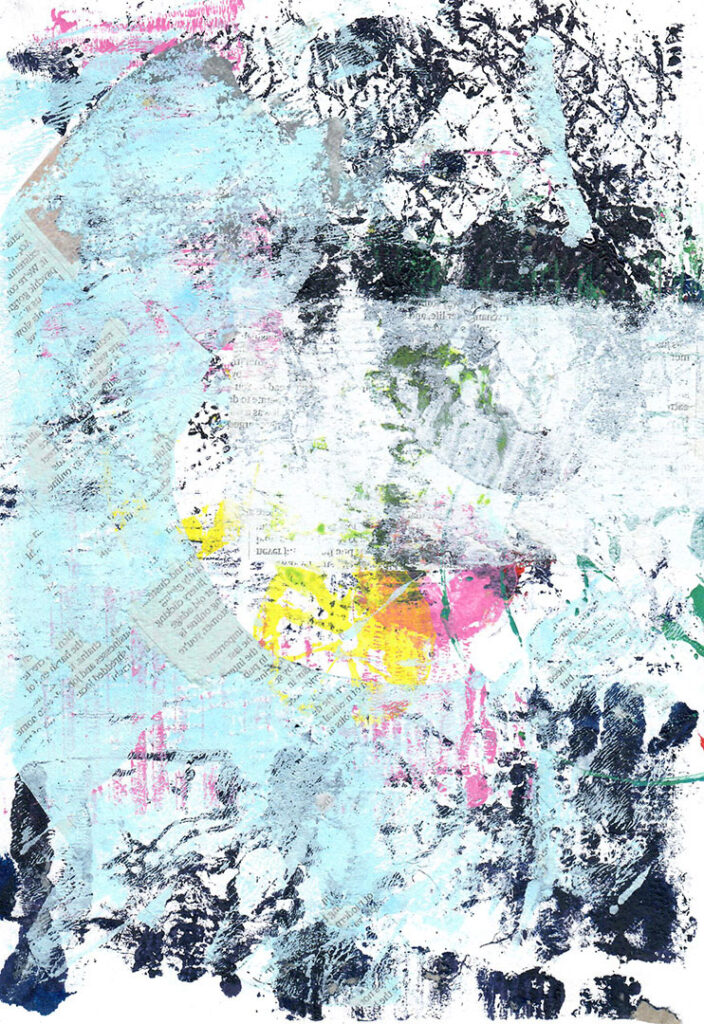
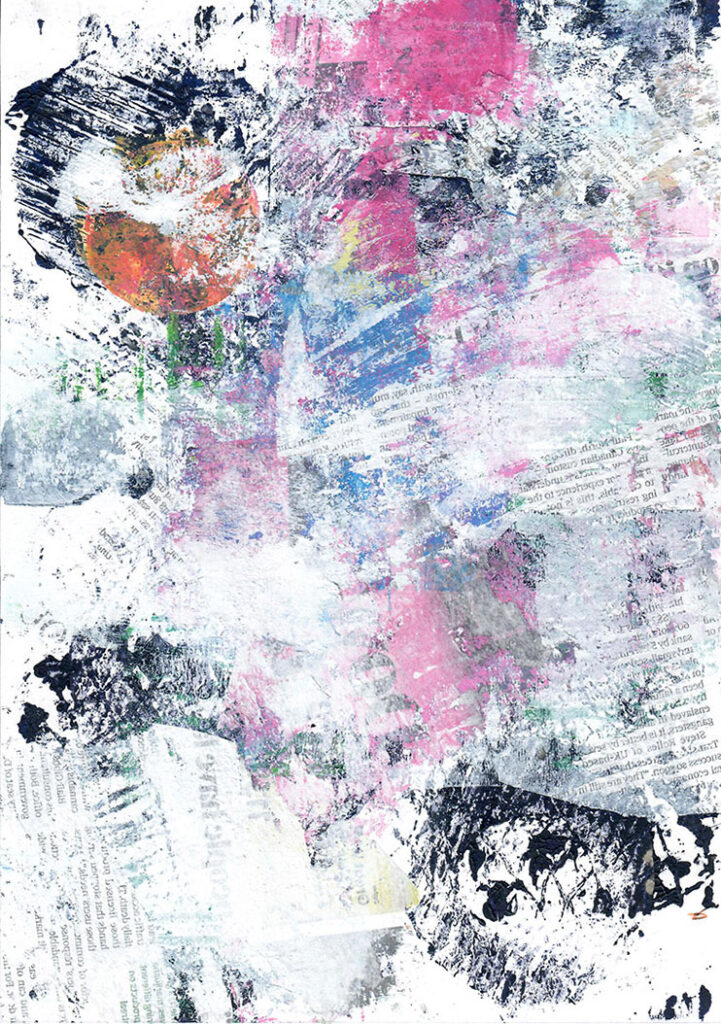

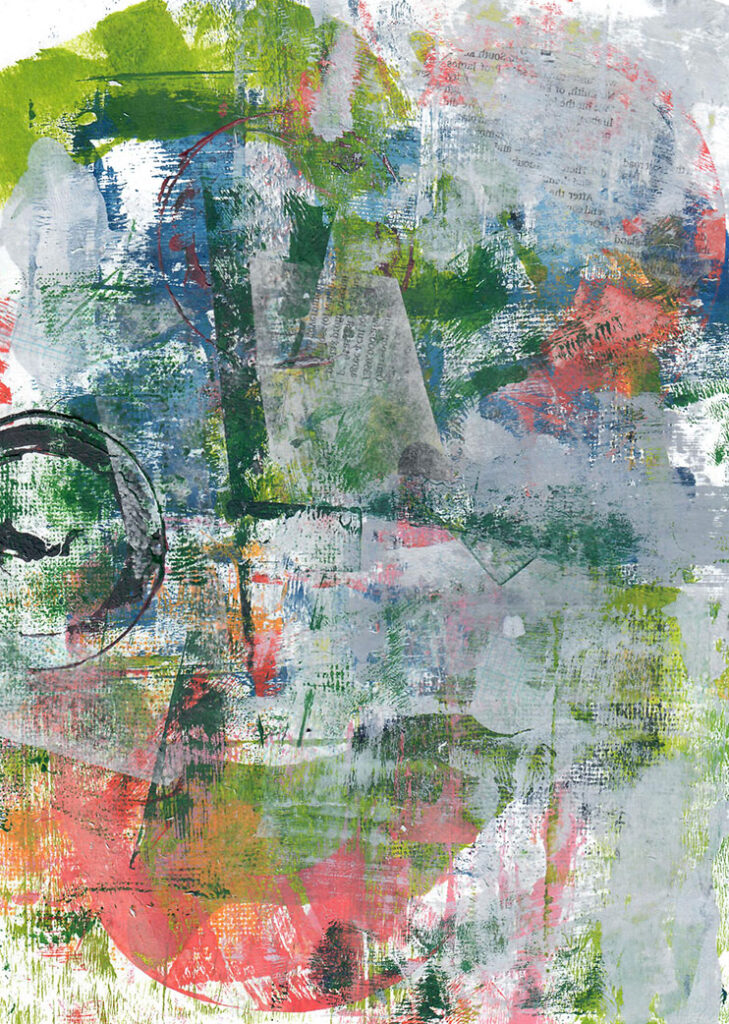
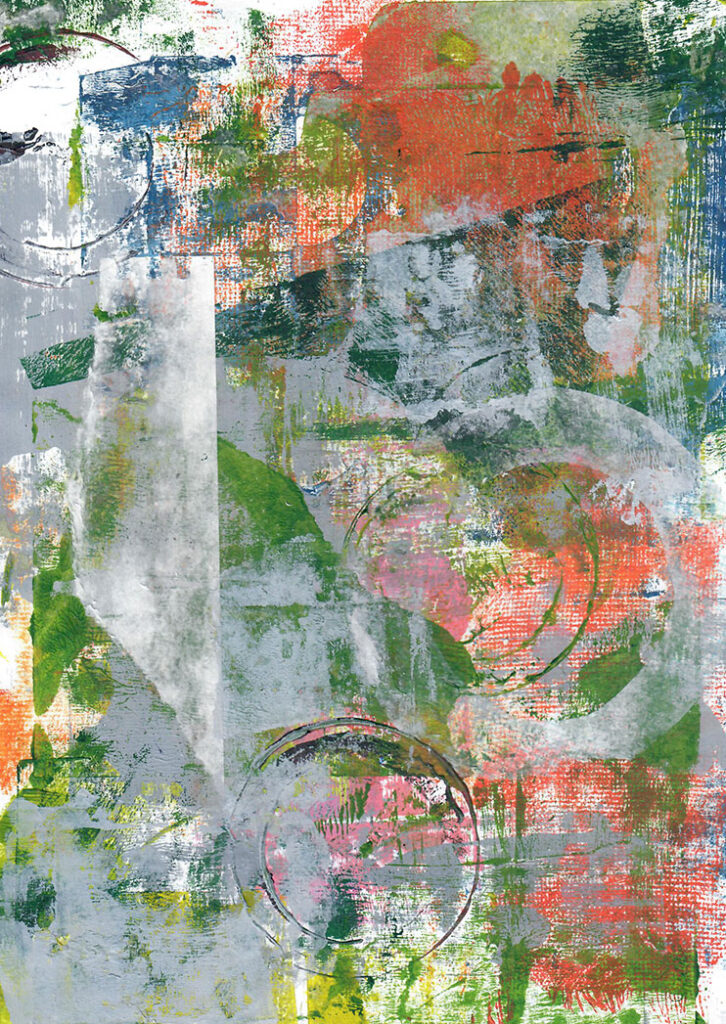
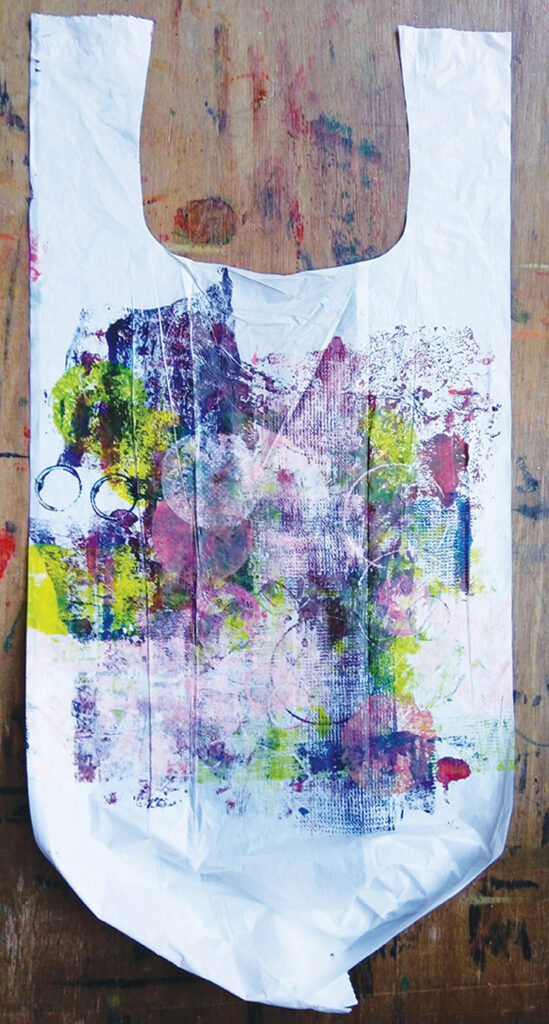
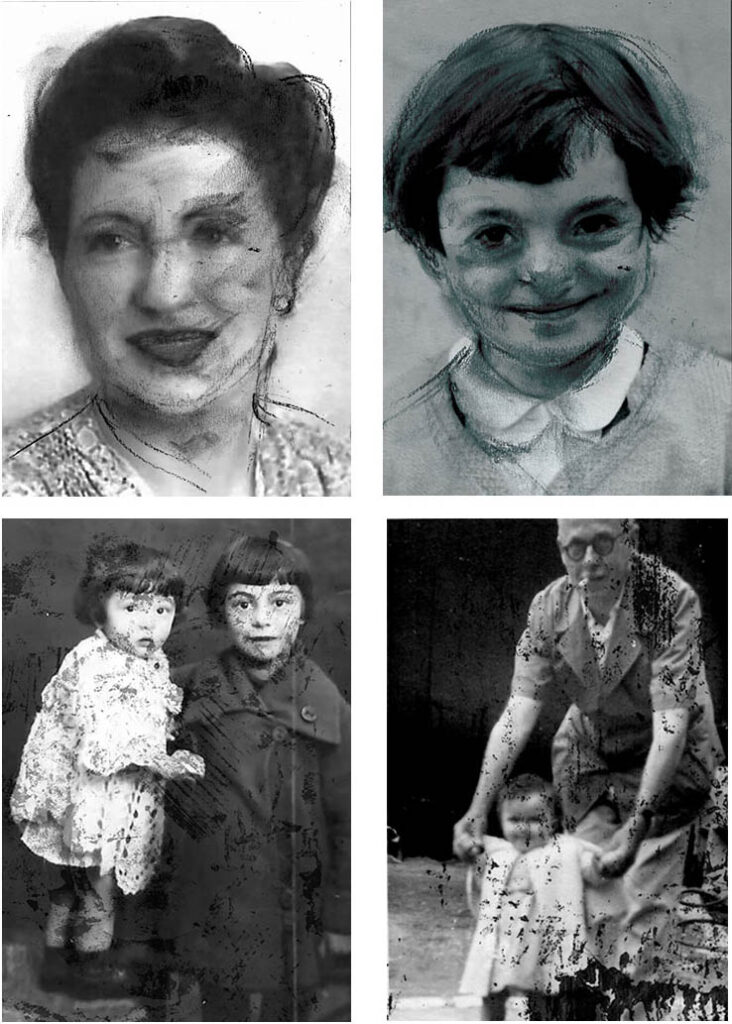
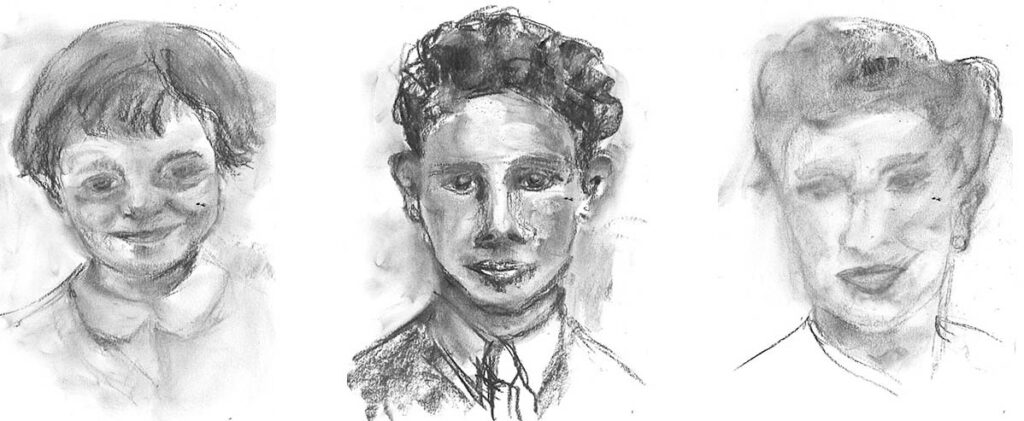
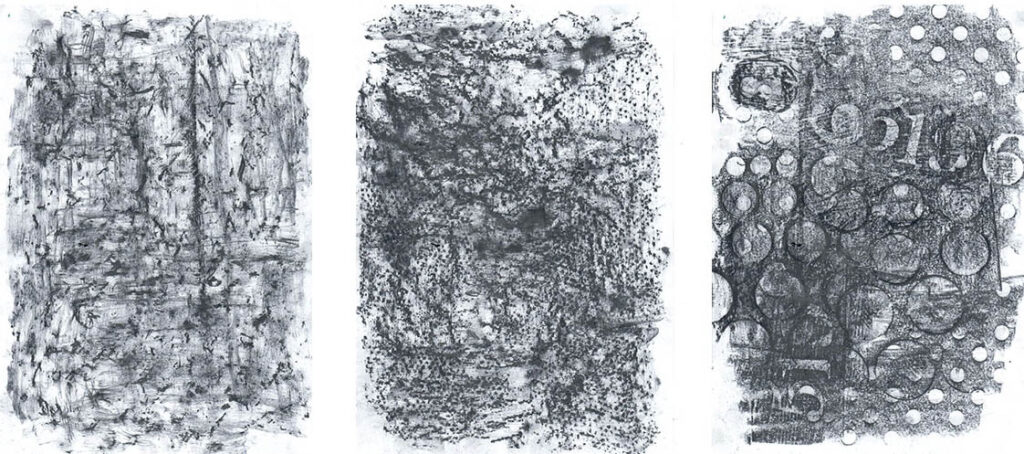
City Lit closed it’s doors on 17th March 2020. So now I’m printing at home, in the garden and in our flat. The course has continued online, so pleased it kept going, thanks to all our wonderful tutors for being innovative.
I wanted to say thank you to all the front line staff who have kept the country going and risked their lives during lockdown. Thanks to all the doctors and nurses, everyone who works for the NHS, every bus driver, tube worker, supermarket staff, dustbin men, supermarket staff, teachers, delivery drivers and everyone else who has kept the country going during the pandemic, I salute you all.
I kept out of the way and made prints and artwork, it keeps me happy and busy.
We had been taught how to make flutter books in one of the last classes at City lit and were due to deliver three versions of an artist book for the end of term.
I did a layout for the book in Indesign and then printed out sheets of acetate to expose on photo sensitive paper in the garden.
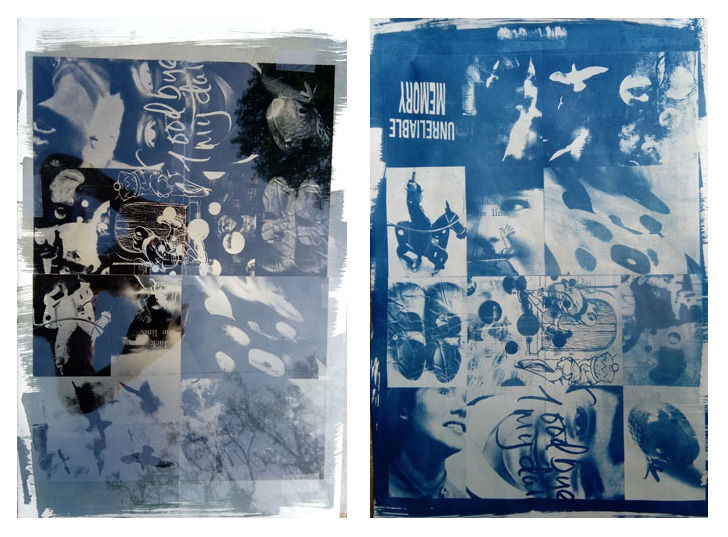
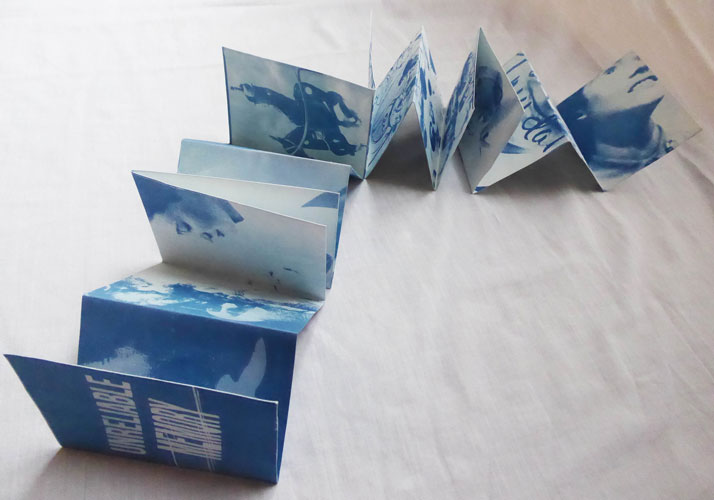

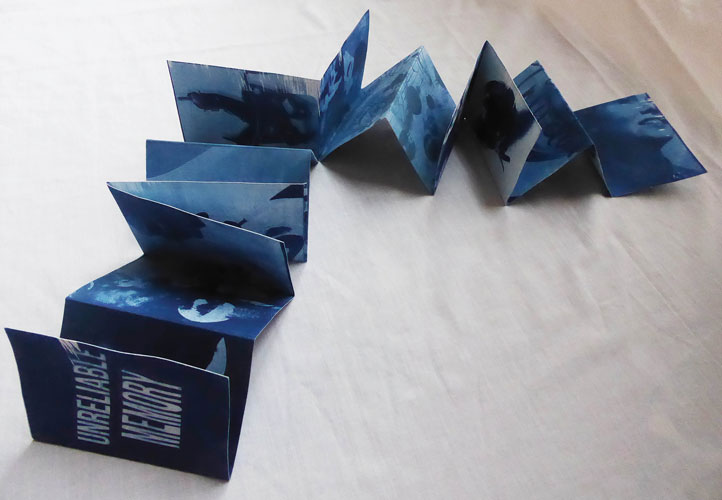
Dada, nihilistic and anti aesthetic movement in the arts that flourished primarily in Zurich, Switzerland, New York City, Berlin, Hannover and Paris. Dada artists’ reliance on accident and chance were later employed by the Surrealists and Abstract Expressionists. Critics have cited Dadaist influences on the punk rock movement of the 1970’s. www.britannica.com/art/Dada
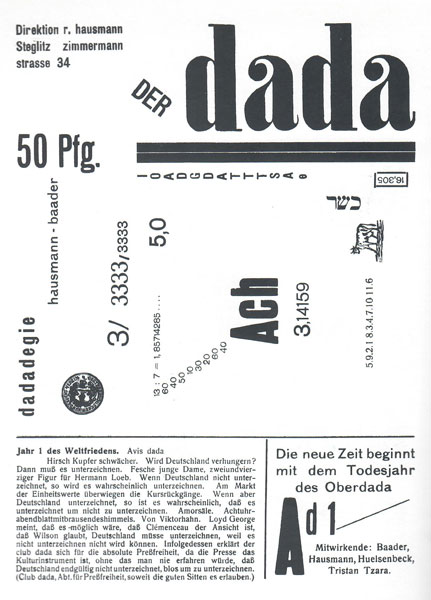

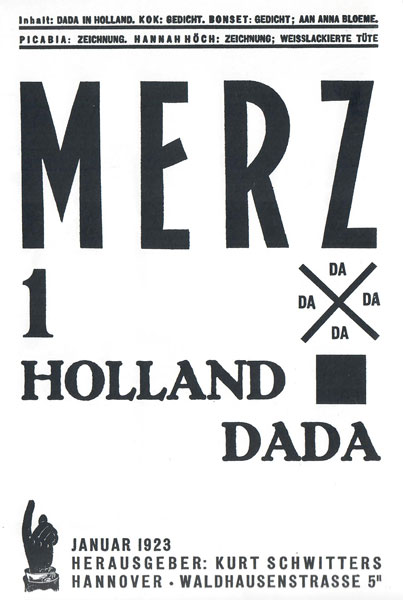
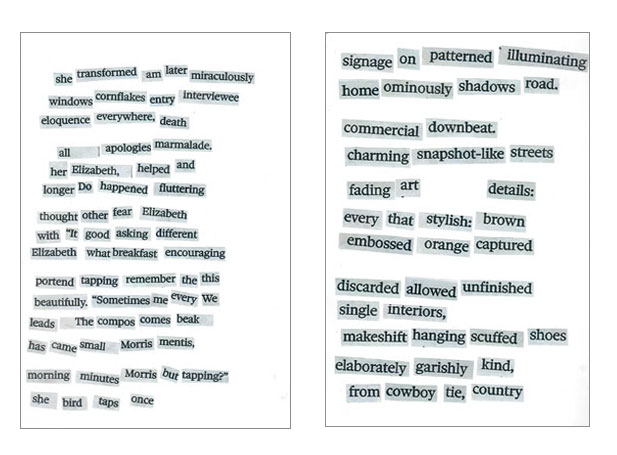

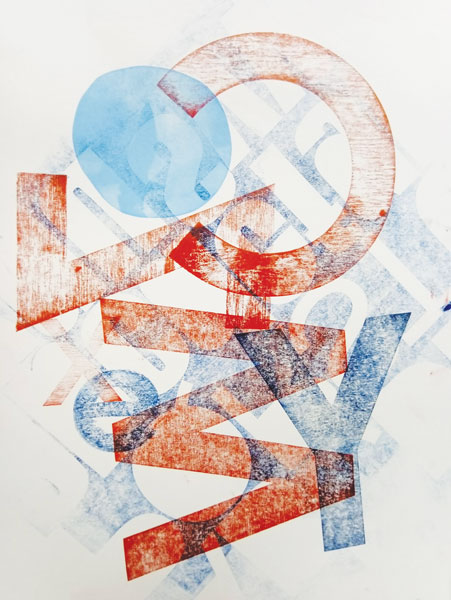
We start on screen printing in February 2020, pre lockdown. Before printing you need to save an image in Photoshop to print out onto acetate.
To create a halftone, open up image in Photoshop, select Image>Mode>Bitmap and select Halftone screen. A window will appear offering choices of dot shape and lines per inch.
Match the resolution to whatever you set your file resolution to usually 300dpi.
For Frequency, opt for between 40 and 65 for a 90 mesh screen. The larger the dot the lower the frequency. The Angle is the angle at which the dots are positioned, 45 degrees is the default. Save as a Tiff file and print onto acetate.
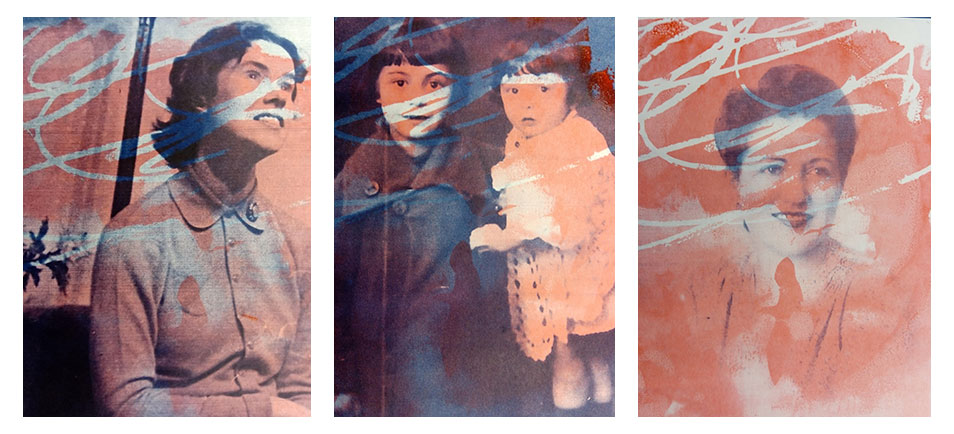
Preparing a screen
1. Place the screen paper-side toward you. Pour the light sensitive emulsion into a coating trough. Tip the lip against the bottom and with a single stroke, pull it to the top of the screen.
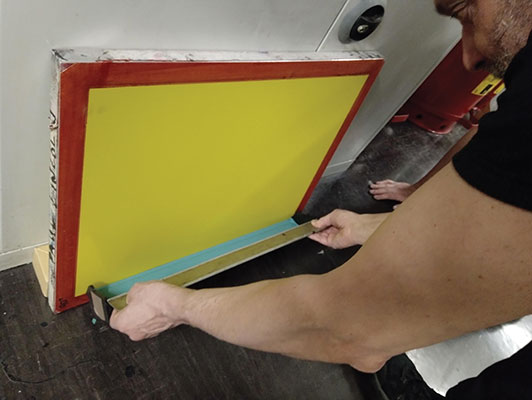
2. The screen should now go into a drying cabinet away from the light. Leave to dry thoroughly.
3. Expose the image on the light unit, don’t put the image too close to the edge of the screen. String needs to be placed in the well of the screen to increase the vacuum. After exposure (5 units) wash the screen on front and back, put finger onto hose to direct the water onto the screen. This will expose the image. Put screen at the bottom of the drying cupboard to dry.
Cover the yellow edges with masking tape, tape into the corners. Build snaps out of thick cardboard and stick with some masking tape onto the edges of the wooden frame. These stop the ink from sticking to the paper.
4. Make a master copy to use as registration. Print this onto tracing paper. The printing ink should be the consistancy of single cream. The squeegee should be bigger than the image size. Flood the image with ink and then make contact with the table, the squeegee angled at 60 degrees. Make three registration marks, two at the bottom and one down the side.
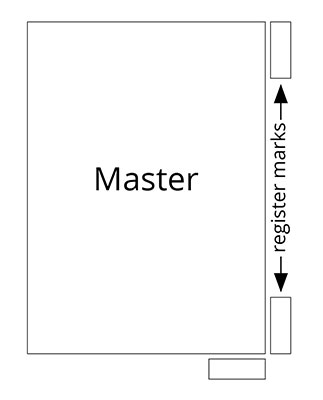
Printing
Colours need to be printed from light to dark. So if printing a 4 colour print, yellow first, then magenta, next cyan and finally black.
Colour blend
Try a colour blend with two colours, mix the two colours at the bottom of the screen. The more the colours overlap, the more gradated they will appear. Flood the screen with the inks and then pull the squeegee
back following the flooding lines.
Monoprinting
Work directly onto the mesh with a brush and ink. Don’t put on too much ink. Acrylic medium can be used to create negative space in the ink.
Using Posca pens
Pin a sheet of acetate on top of the printed master copy. Centralise the image under the acetate. Draw onto the acetate with lithographic pencil, Posca pen, black oil pastel, or black acrylic paint, expose acetate onto screen.
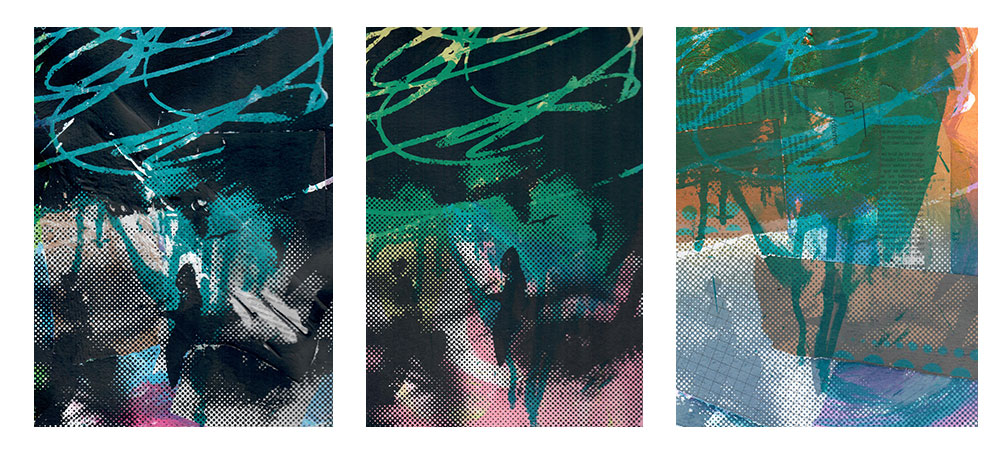
Thanks to great teaching from Adam Hogarth at City Lit, I’m just starting to get the hang of screen printing.
The course starts and our first task is to work on cyanotypes. I know already I’m going to love this.
To create artwork for a cyanotype, open an image in Photoshop. Under image choose grayscale>bitmap>300dpi. Method diffusion dither. This breaks the image up into dots. Save the file as a tiff and then under adjustments choose negative. The image then needs to be flipped horizontally so that it will print the right way round.
The chemicals needed to coat the paper are, 25grams of Ferric Ammonium Citrate, this is mixed with 100ml of water in a plastic measuring cylinder. Then mix 10 grams of Potassium Ferricyanide with 100ml of water in a separate measuring cylinder. The chemicals are then mixed together and the paper is coated, it will look yellow in colour. It is best to do this in low light conditions so that the chemicals down’t start to expose. The amount mixed will be enough to coat approximately 50 A4 sheets of paper.
The paper needs to dry in a dark place, or use a hair dryer. After the sheets are dry they can then be exposed with the acetate face down on the paper in the exposure unit for approximately 10 minutes at 75 units. I was to experiment with exposure times at home in sunlight during lockdown but that comes later.
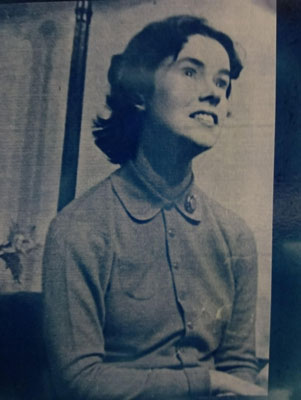
An early cyanotype of my mum.
Abstract images can be made from coating an acetate with printing ink, then rubbing some off with a rag and adding drops of oil and paraffin. Thanks to Gareth Berwyn in the City Lit print room for those ideas.
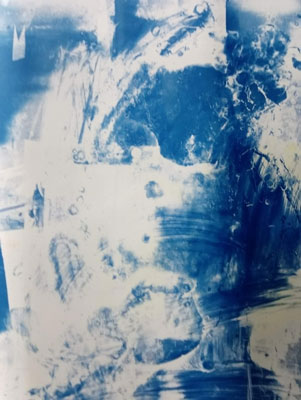
There are a multitude of ideas to be explored with cyanotypes. I begin to create images in Photoshop using layers and my found images.
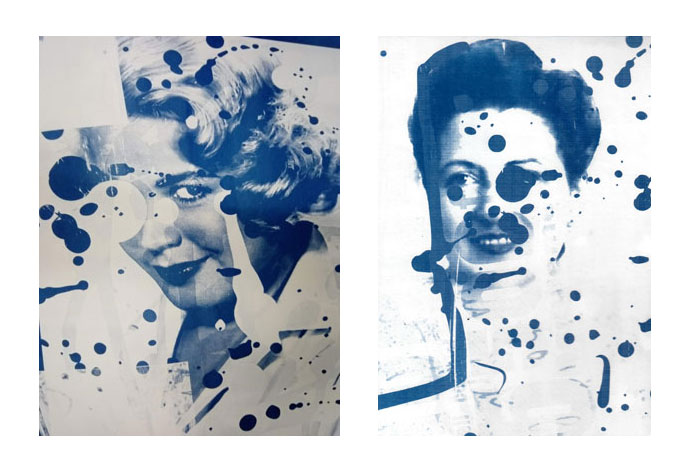
Overlaying acetates on each other, the images started to become surreal.

I had signed up to do the advanced class in printmaking with digital content at City Lit lead by course leader Rolina Blok.
Needing to find what theme I was going to work on I found inspiration in a photograph of my mother standing at the kitchen sink in the 1950’s.
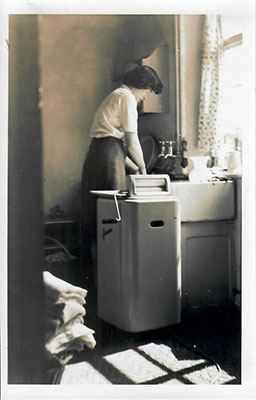
It seems to be a quintessential image of a woman’s role in the 1950’s and sparked my imagination. How could I use this image of my mother in my work?
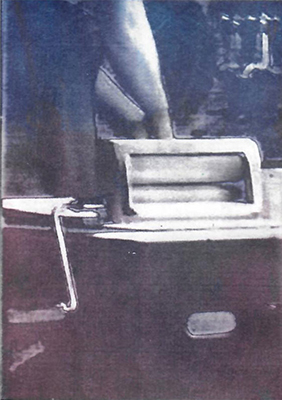
It’s already abstract, it appears I need to distance myself somehow to make my work.
I visited a flea market in Paris in December 2019. Somehow I’d found out there was a stall there selling old photographs. At first I’d felt uneasy using found images of unknown people but some friends who run a cafe and gallery down the road told me they often bought photographs like this from boot sales.
I bought some amazing images to use.
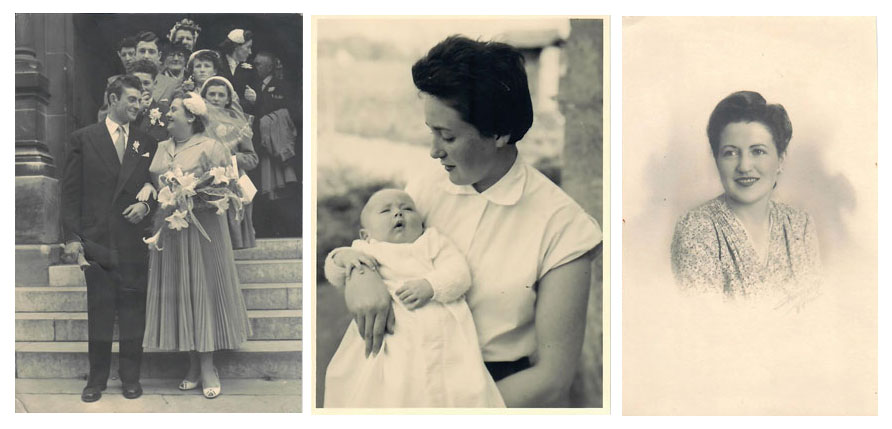
So many questions about these images, who are these people, how did their photographs end up in a flea market, didn’t their families want them anymore?
I’m fascinated by them, my choice of image seemed to be mostly of women.
I started to visit some car boot sales in London and found some gems. These images are taken from a photo album I found in Pimlico, they look like they come from the 1920’s.
